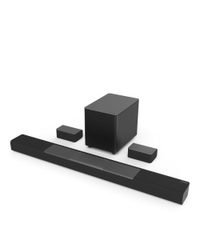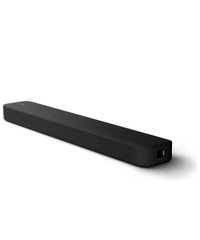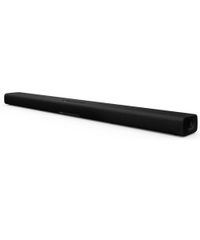The best soundbars of 2025: Tested, rated and reviewed
The best soundbars from Sonos, Sony, Samsung, and more
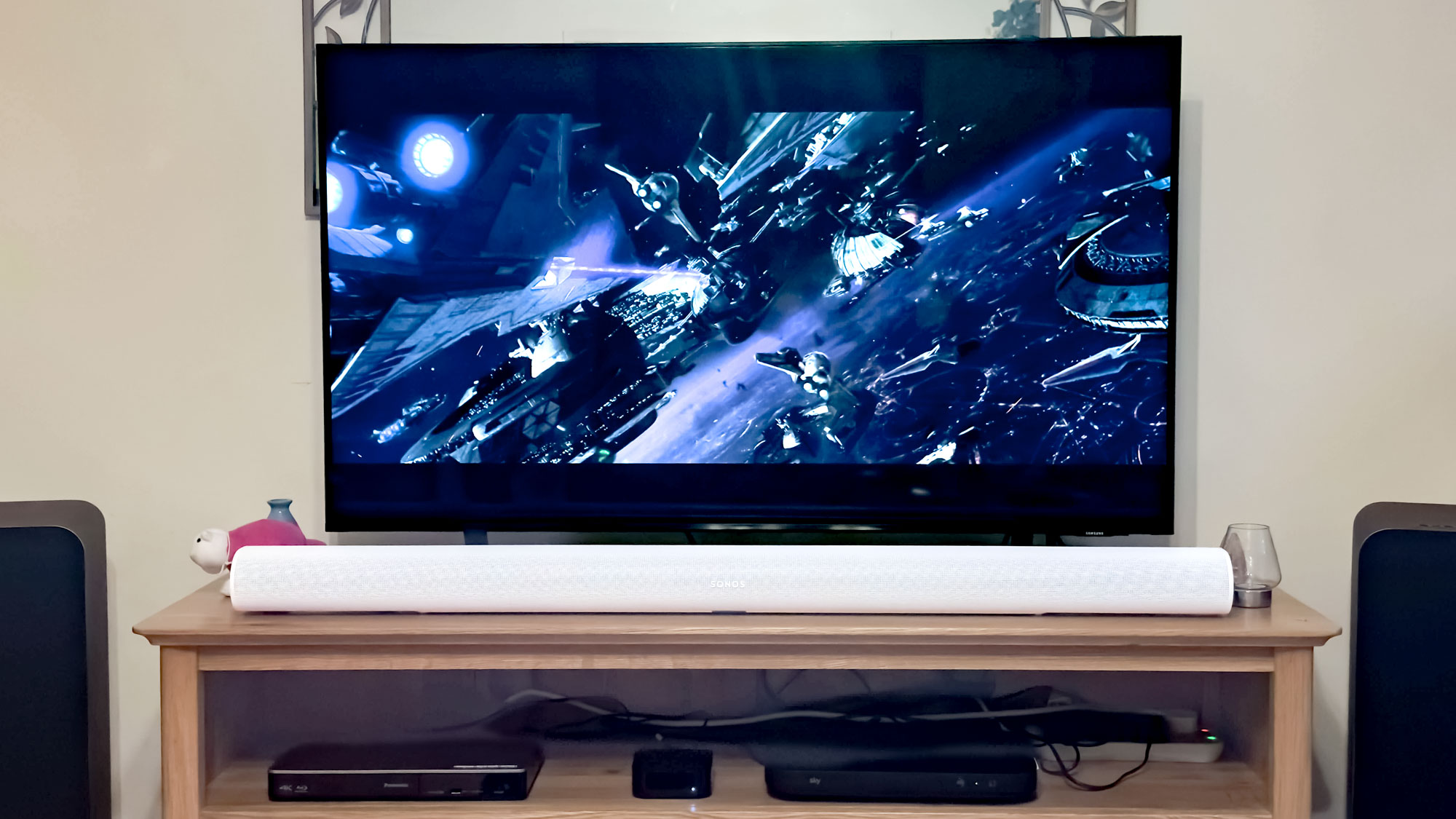
It is a truth universally acknowledged, that a single TV in need of decent sound, must be in want of one of the best soundbars. If you're on the hunt for a new soundbar, you're in luck — I've spent the better part of 10 years searching for excellent gear that makes your TV sound better.
Whether you're looking for a home cinema hero or a brilliant budget option, I've collated the best soundbars that Tom's Guide has ever tested. From setup to sound, we break down each option to be as simple as possible: No matter what you're looking for, I can help you find a great soundbar to fit on your TV stand.
If you want the very best soundbar that money can buy right now, you're looking at the Sonos Arc Ultra. It's loud and in-charge — although it will make a dent in your wallet to match. If you're looking for something on a budget, you should think about the Sony HT-S100F. Budget price, but excellent sound.
My favorites

If you're after the best sounding soundbar around with features coming out of its ears, then the Sonos Arc Ultra is a great option. It's got stunning Dolby Atmos performance, epic dialog, and great smart features. You do pay a lot for one, though.
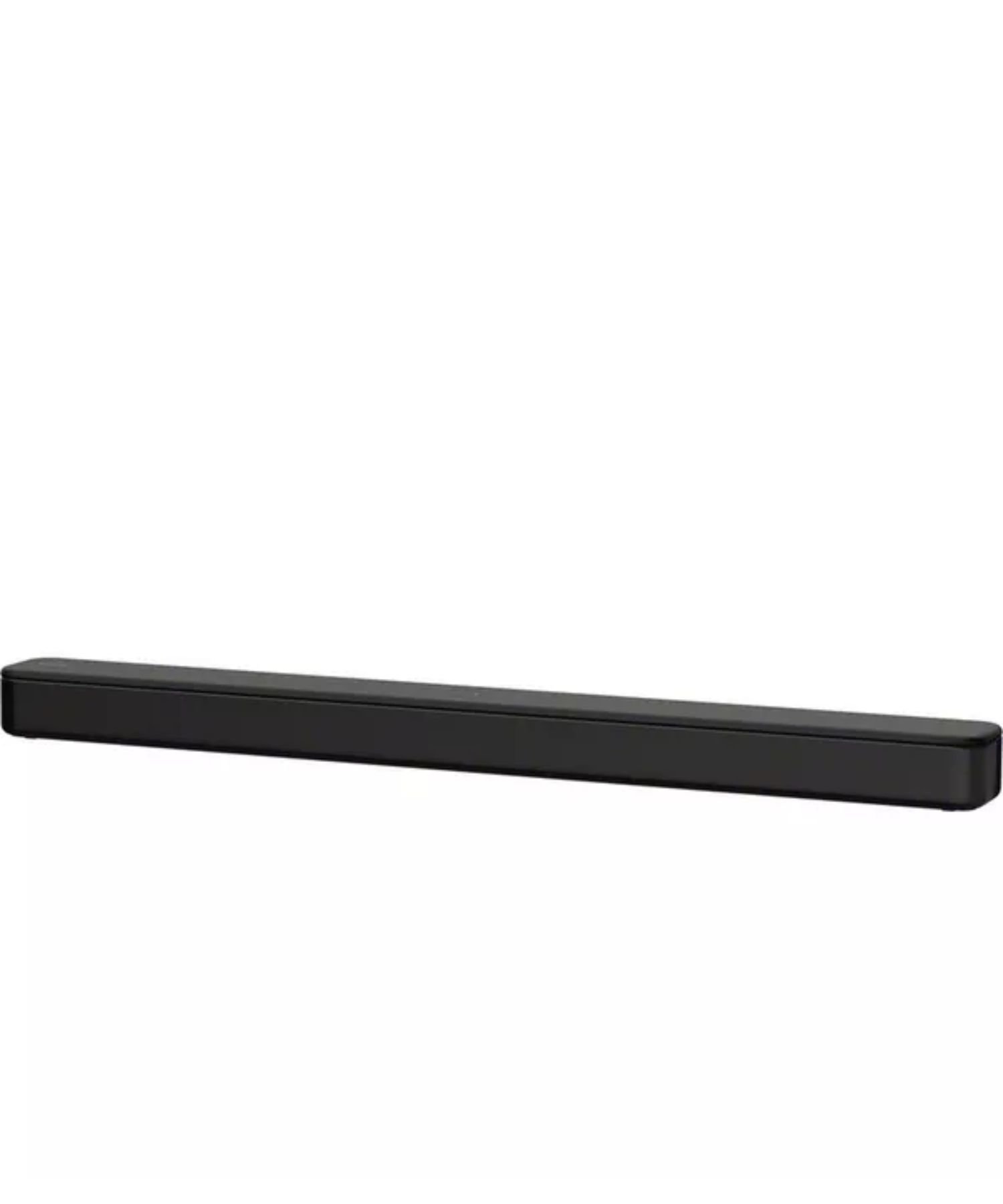
Don't want to break the bank, but still need great sound quality? The Sony HT-S100F is the soundbar for you. Great sound for TV shows, with clearer dialog and a well-built chassis — and it's frequently found under $100.
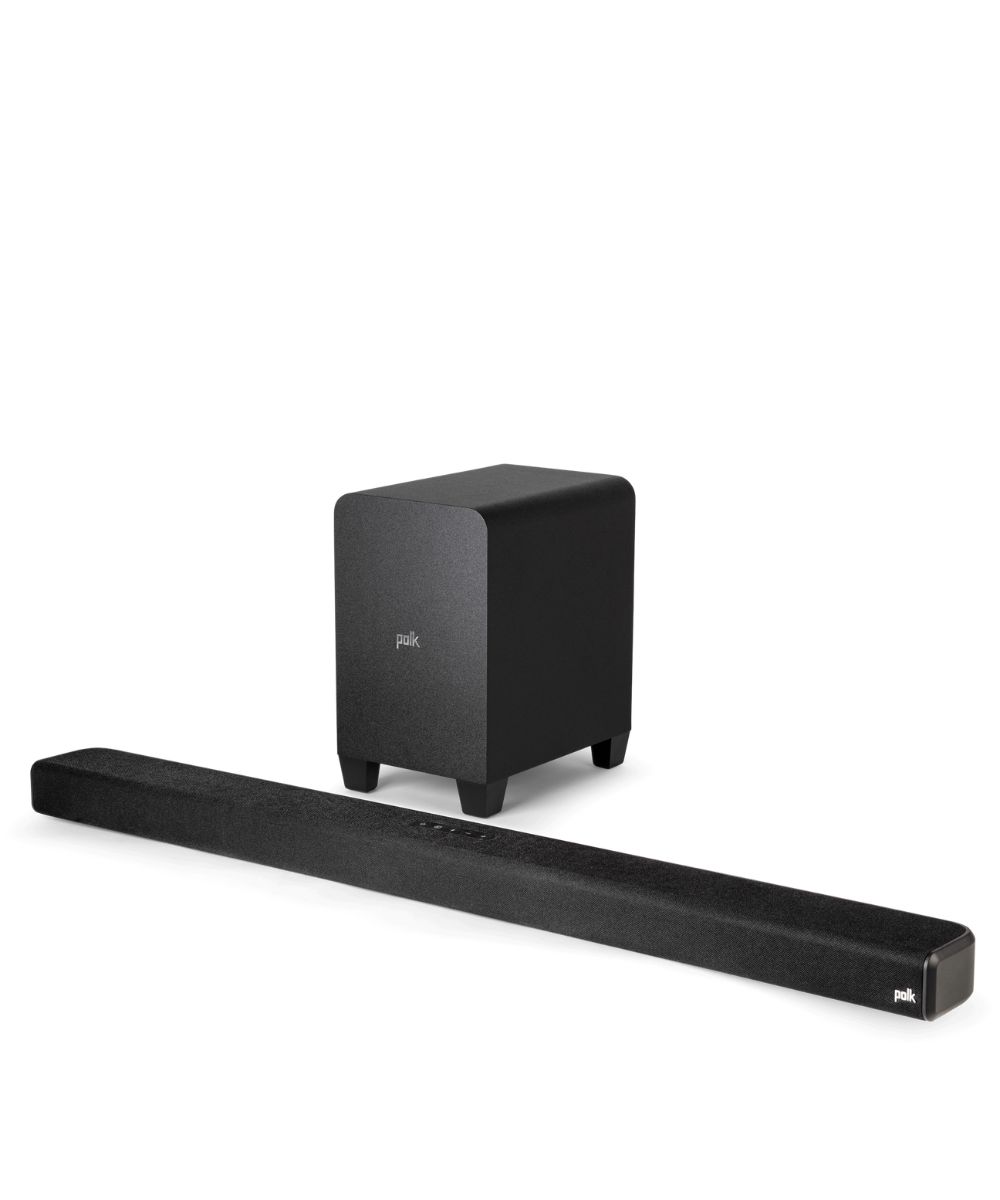
If you're watching movies, the you're going to want some extra bass — and the Polk Audio Signa 4 brings the low-end with its included sub. There's also Dolby Atmos surround on board for a cinema like experience on a budget.
Meet the testing team
The Tom's Guide testing team is an experienced bunch who love good sound. Here's why you can trust us to find the best soundbar for your needs:

From the time I built a surround system from the cheapest stuff I could find on eBay to reviewing the latest and greatest sound gear, I put a whole lot of time and effort into working out which soundbars are worth your money. I've constructed this guide with input from the rest of the team so that we can use our experience to guide you through your soundbar journey.

When I’m testing soundbars, I put them through their paces in our state-of-the-art testing suite, complete with a top-of-the-range Panasonic QLED TV and an array of 4K Ultra HD Blu-Rays. I’m looking for soundbars that make movies come to life — both budget-friendly and premium.

As a reviews writer, I put soundbars through rigorous testing by analyzing sound quality across various film and TV genres, connectivity options, and determine whether they're the best value for money. I love watching movies at the cinema so I like a soundbar that can closely replicate the sound via Dolby Atmos. I also play a lot of video games on my PS5 and there's nothing better than a soundbar that makes you feel like you're actually a sword-wielding samurai in feudal Japan.
How do we test the best soundbars?
Before we dive deep into the best soundbars, I just want to go through what we look for when we're testing them. We make sure to evaluate the soundbar in some key areas.
Setup: While it's something you're only going to do once, we want to make sure that it's as easy as possible to get working. Plug-and-play is the name of the game here, and if there are extra features we want to make sure that they're as easy as possible to use.
How big is it? Everyone's space is different. Maybe you've got a massive room with loads of stuff in it, or maybe your living room is more compact and minimal. You want a soundbar that's going to suit your space, and, more importantly, not going to take up too much of it. We check whether the soundbar fits under our 50-inch OLED Philips testing TV to make sure you're not going to have any size issues. Ultimately, it needs to fit on your TV stand.
Are there any extras? What's in the box, and are its contents any good? Some soundbars come with extras like surround speakers and subwoofers. I want to make sure that those extras are worth it, and that they're not just pictures to sell them at the store.
Sound: This is arguably the most important part of the soundbar, and there are a number of things we look out for here. How's the dialog? Is it clear, or muffled? What about the bass — are you going to have rumbling floors in your movies, or are there going to be problems with the low end? I love testing the sound portion because I get to watch movies instead of working; But it's still important when testing and working out whether a bar is for you.
Best soundbar overall

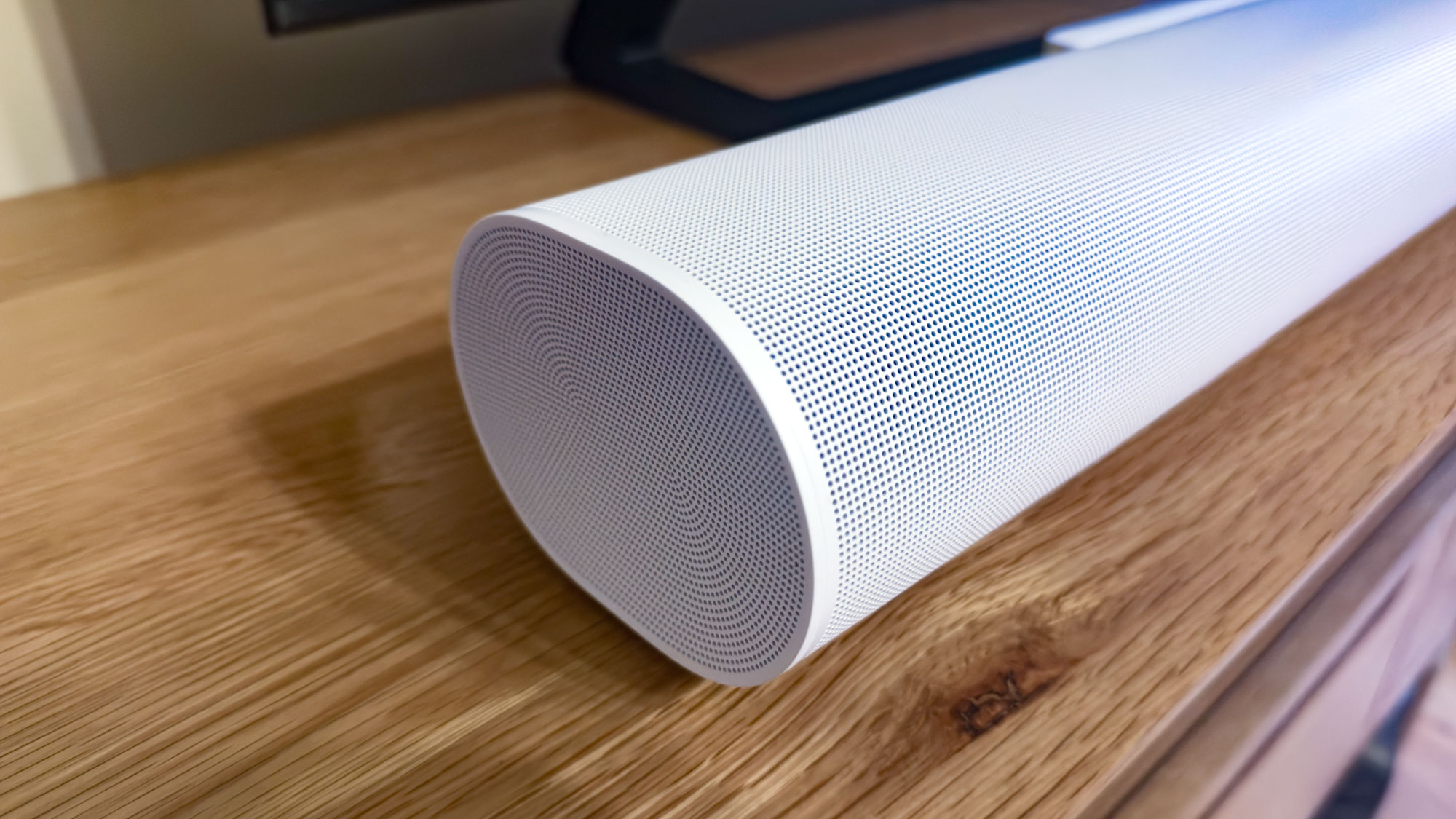
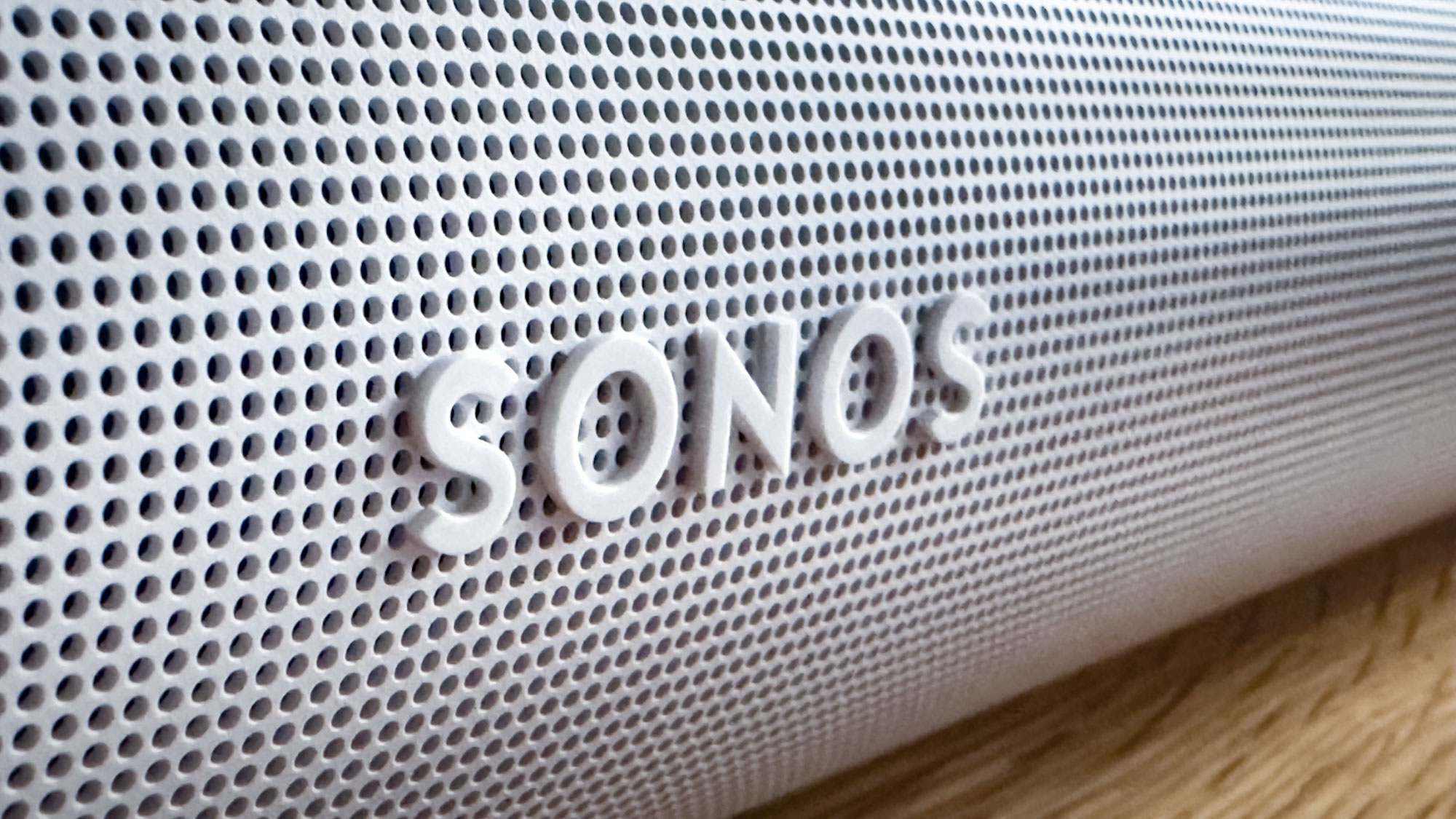
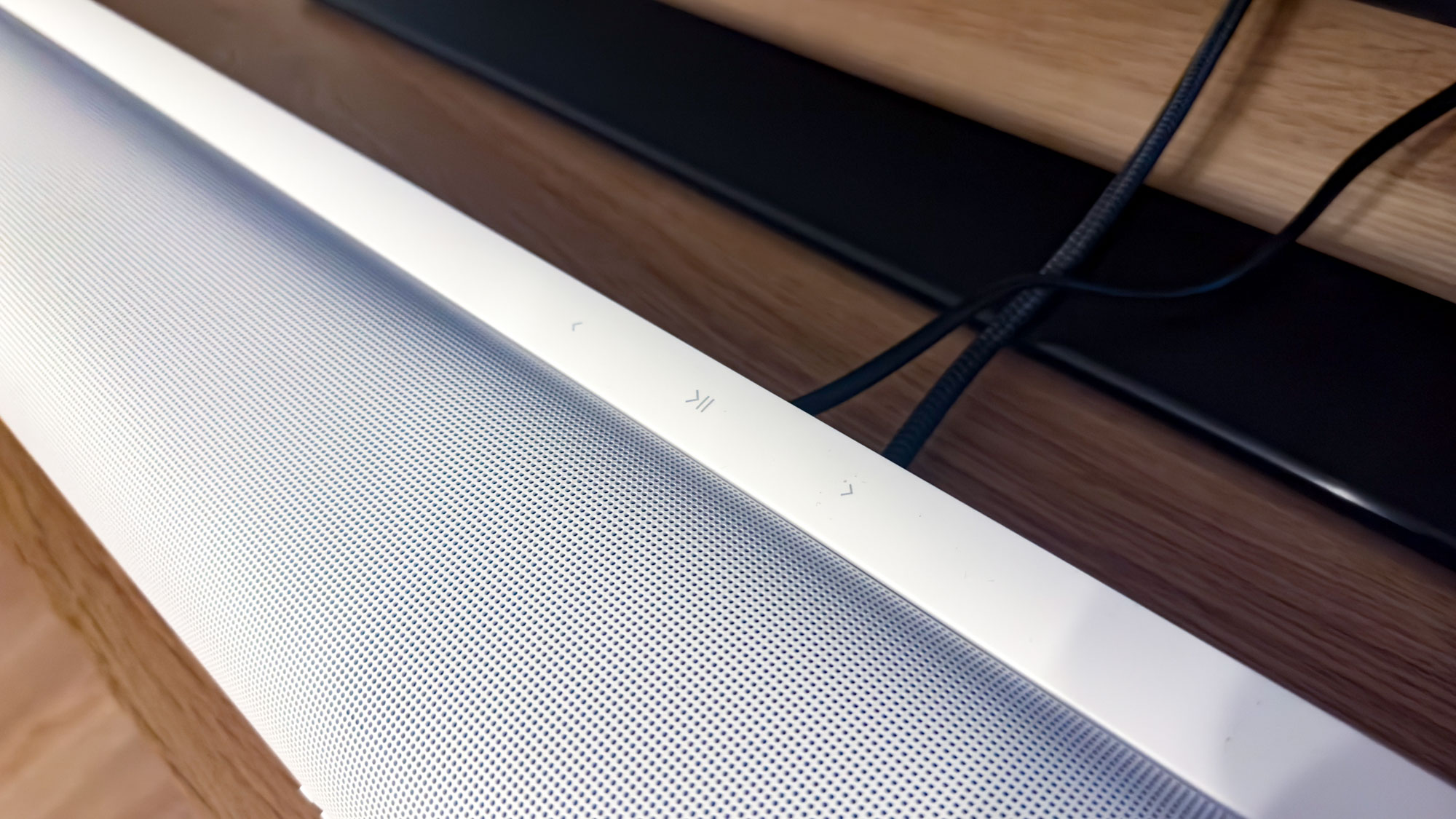
Specifications
Reasons to buy
Reasons to avoid
Setup: Setting up your Arc Ultra is going to take a bit more effort than some of the other options on the list. I found it fairly easy though, given the excellent instructions. If all you want to do is use the soundbar, you just plug it into power, plug the HDMI port into the back of the soundbar and the HDMI ARC port of your TV, and it should work without problems at all. I did have to change the settings in my Samsung TV sound menu to make sure that the device was set as the primary sound output, but then it worked with no problem.
If you want to use the excellent Sonos room correction settings, smart features, or to connect other Sonos speakers as surrounds, things will get more complicated. You'll need to use the Sonos App for these — and while it's not difficult, it is extra work. The room correction options also need you to move around the room while waving your phone around, so if mobility is something you struggle with, you may want to look elsewhere.
Once set up, you won't have any issues, but it's worth bearing in mind that it takes more work to get it working. It's all absolutely worth your time though, with massive boosts to sound quality and useful features within the Sonos App.
How big is it? The Sonos Arc Ultra is a big soundbar. It's very long, measuring around four feet long. I found it perfectly suited for TVs larger than 55 inches, although if your TV is smaller, things might look out of place.
There's less of a problem with the height. It's only about 3 inches tall, so it'll fit under most TVs without a problem.
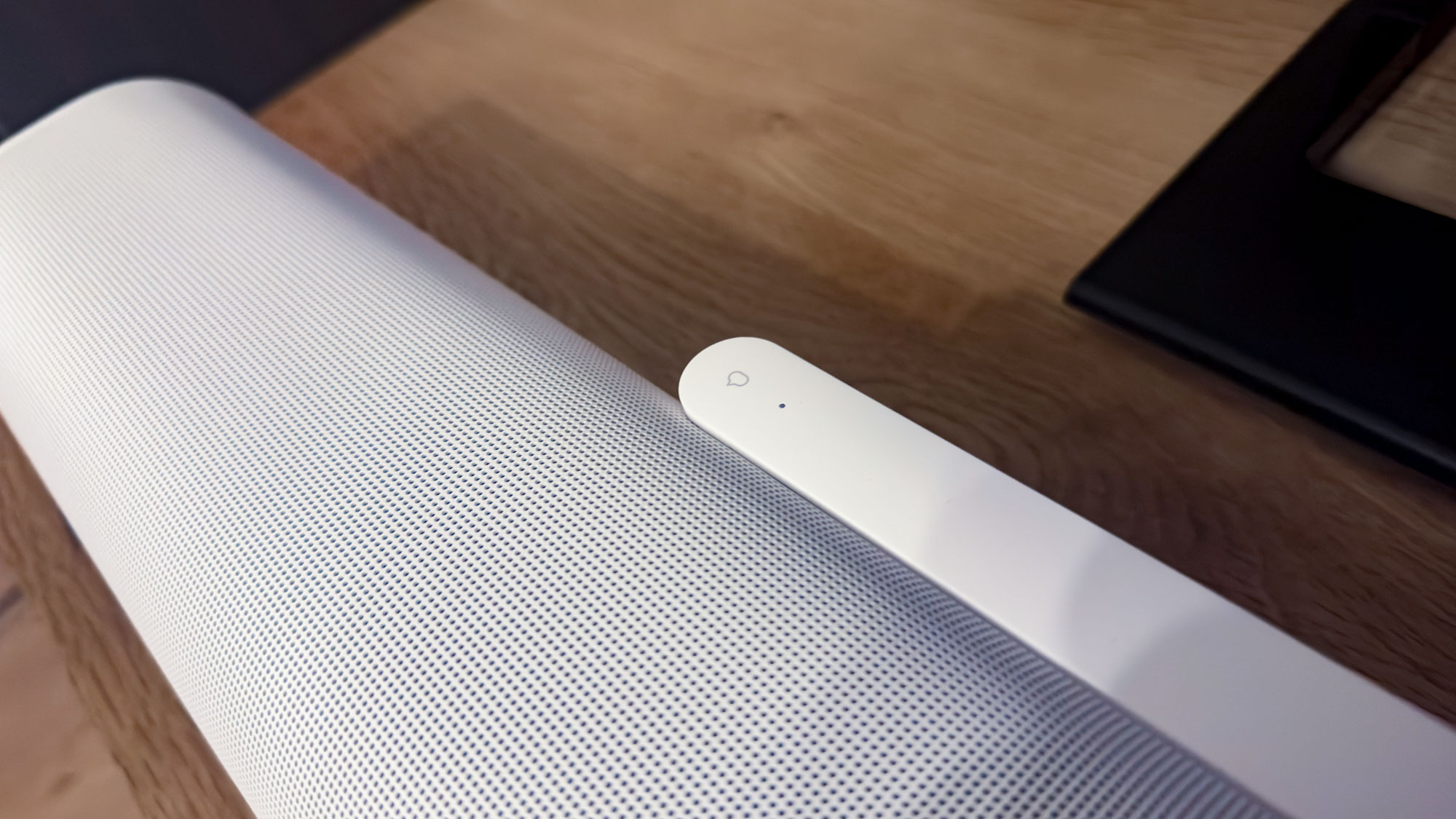
Are there any extras? You get the soundbar in box — there's no included subwoofer here. Not that you really need one, though, given that Sonos has managed to pack some incredible bassy hardware into its slim frame.
If you want to enhance your movie-watching experience, though, you can add in a Sonos sub and surrounds in the from of Era 100 or Era 300 speakers. It adds to the cost, but it gets very close to dedicated home cinema sound.
Sound: This is the best bit of the Arc Ultra. I love the way that soundbar sounds for movies and TV, with some incredible body to the sound. I found the dialog clear while watching the news and other TV shows, and it was excellent when listening to Sir David Attenbourough talk to me about dinosaurs in Prehistoric Planet.
For movies, as you might expect, the Arc Ultra dominates. I discovered that even without extra surrounds the Dolby Atmos was amazing, putting me in the centre of a space battle in Star Wars Episode 3. The bass without a sub is surprisingly good as well, although if you really want to feel your movies you should buy the extra subwoofer.
It's pretty good for music as well, uncommon for a soundbar. There's plenty of space, thanks to the wider form factor, and the bar manages the low end of your tracks pretty well too.
- Read the Sonos Arc Ultra review
Best soundbar for TV
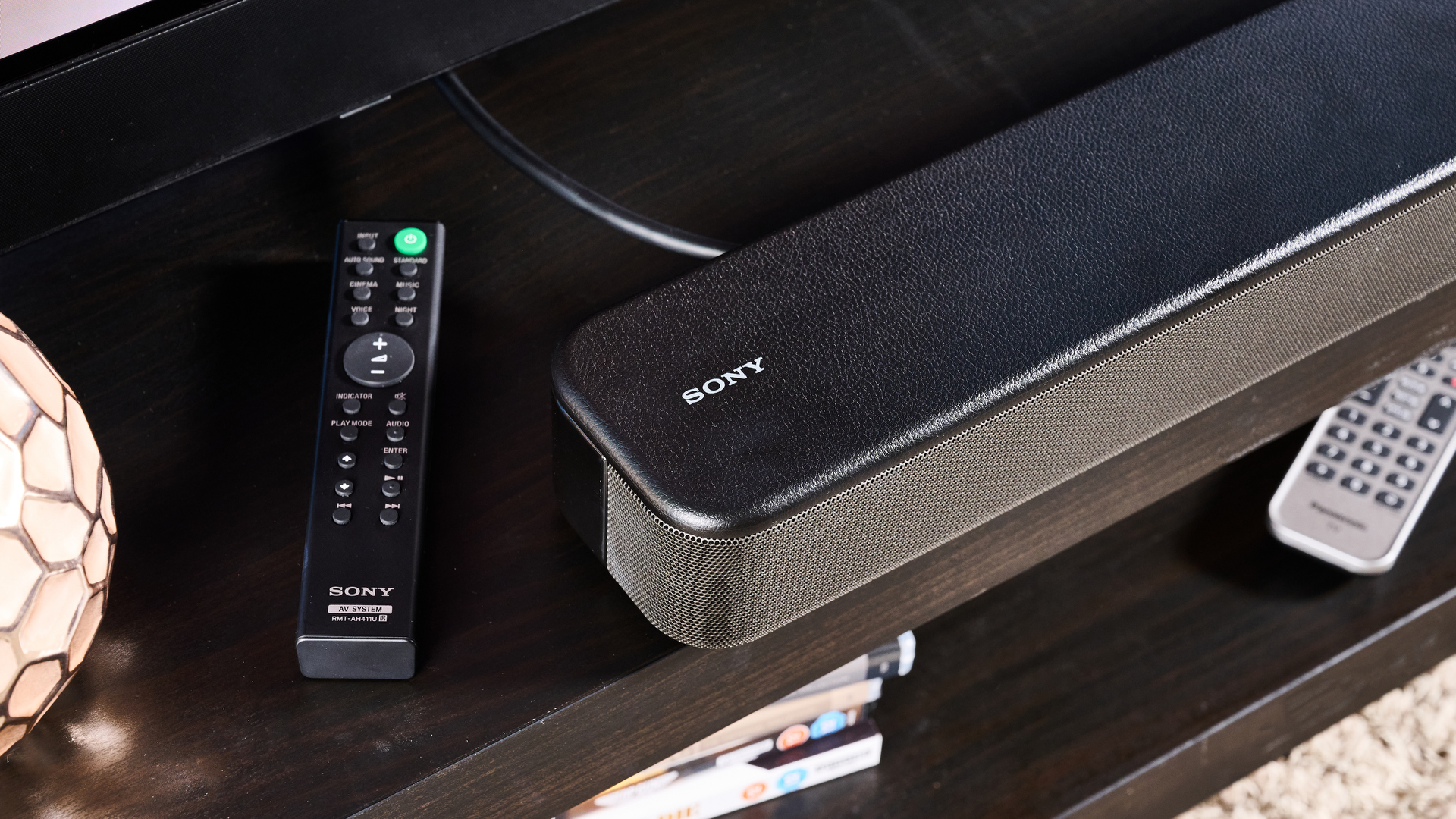
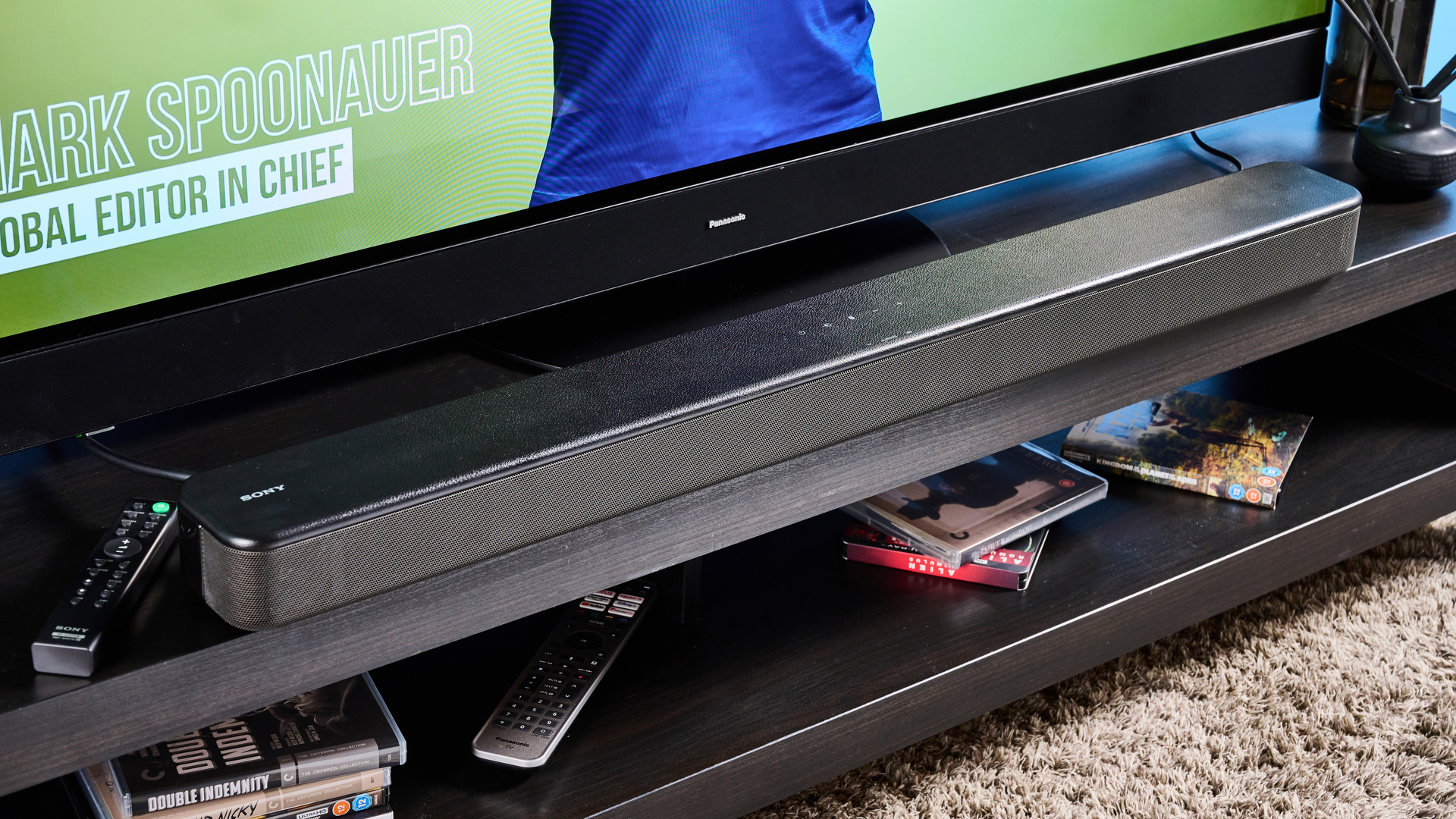
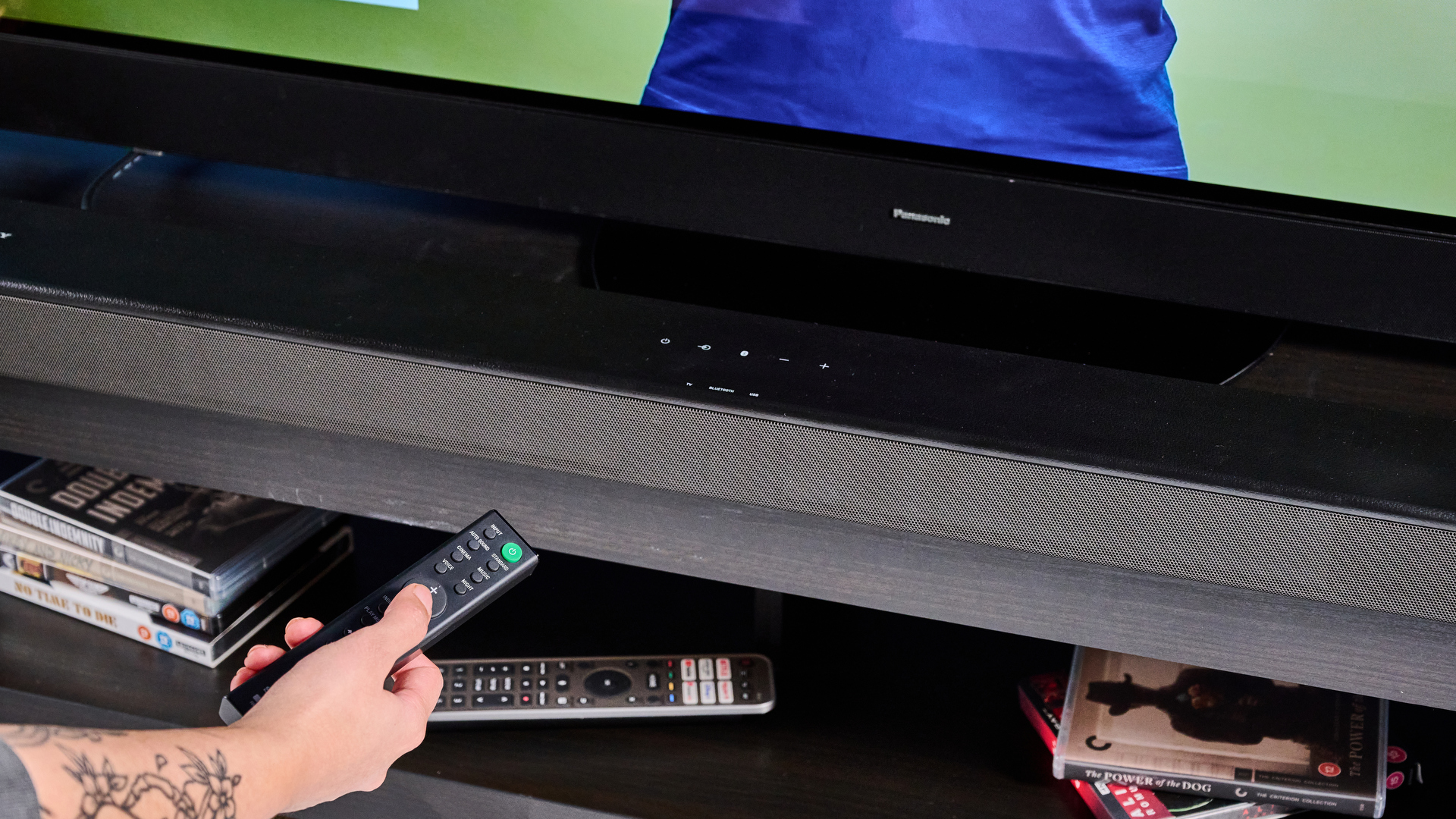
Specifications
Reasons to buy
Reasons to avoid
Setup: Getting the HT-S100F up and running is about as easy as they come. Just plug the power in, connect the HDMI port to the HDMI ARC on your TV, and it'll turn on automatically whenever you turn on your TV.
Erin did find that you might have to occasionally turn the bar on with the remote control, but it didn't happen enough to be a massive problem.
How big is it? The HT-S100F is designed for normal-sized televisions, and it's compact frame will fit on most TV stands. It measures 35 inches long, so you'll be fine for TVs from 32 inches to 48.
It might seem a little small for larger TVs, though, with the screen dwarfing the soundbar beneath. You'll also find some minor sound issues with larger sets, as the picture feels wider than the sound that's coming out.
Height-wise wise you'll be fine with a range of different TVs as well. The bar measures just 2.5 inches tall, so it won't cover the bottom of your screen. If it covers the IR receiver of your TV, there's an IR repeater built in so that your controller still works.
Erin found it fit well underneath our 50-inch testing TV, although if you've got a larger TV set, you might want something slightly larger in the long run.
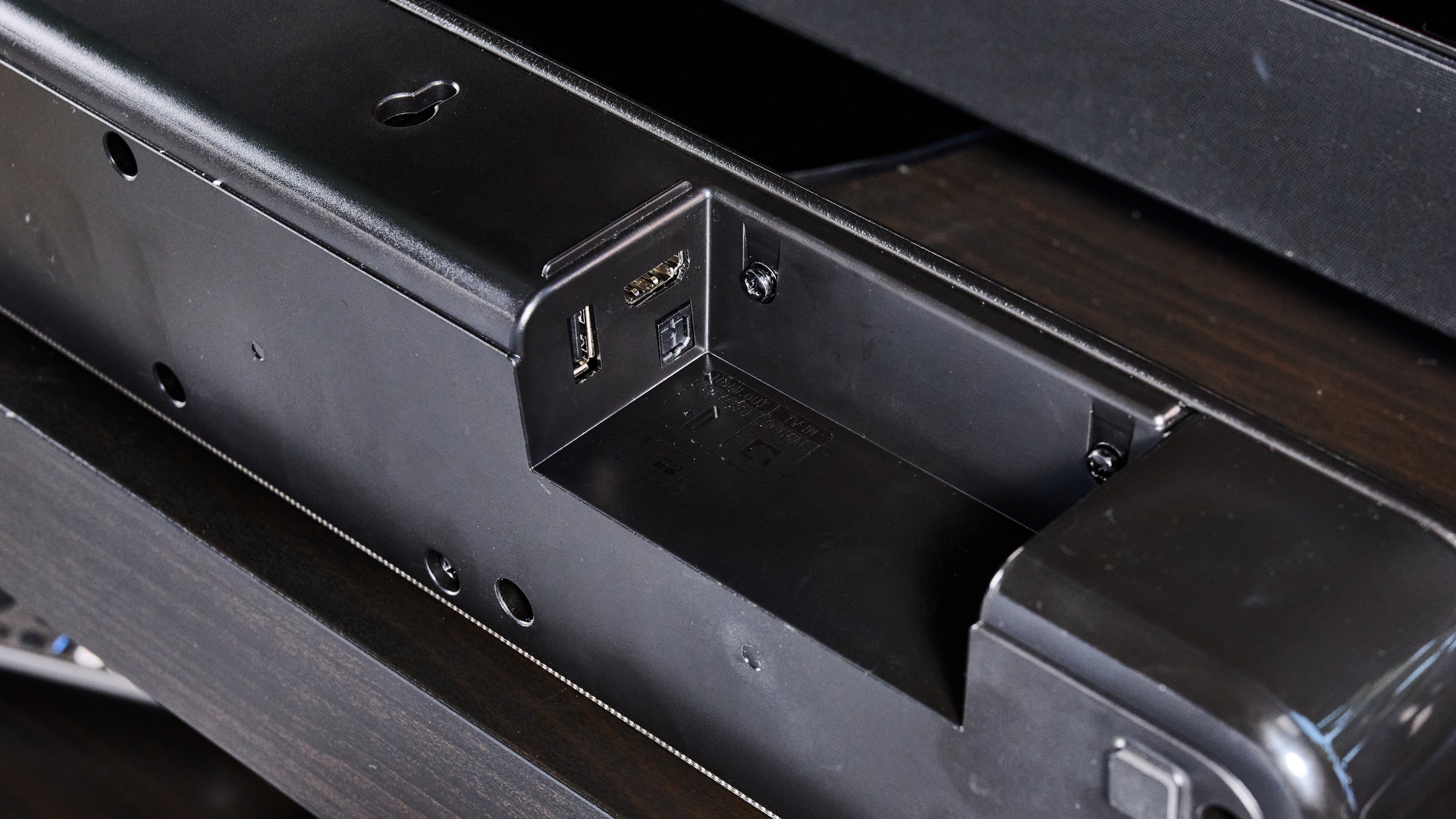
Are there any extras? In the box of the HT-S100F, you get the soundbar — and nothing else. You can't buy an extra subwoofer or surround either, leaving you with no upgrades for the future.
This makes it great for just a simple setup, and it keeps the cost down. There's a controller in the box as well, so you can connect Bluetooth devices and change sources without standing up.
Sound: The HT-100F isn't going to blow you away if you're a movie lover, but its solid, serviceable sound is a big step-up over your TV's built-in speakers. It makes dialog clearer, music sounds better, and sound effects are easier to hear.
For music, things wheren't quite so impressive, but if you've got no other ways to listen to music in the living room, it will more than suffice. If you're looking for a cheap way to get much better sound out of your TV watching, then this is the way to go.
- Read the Sony HT-S100F review
Best soundbar for movies
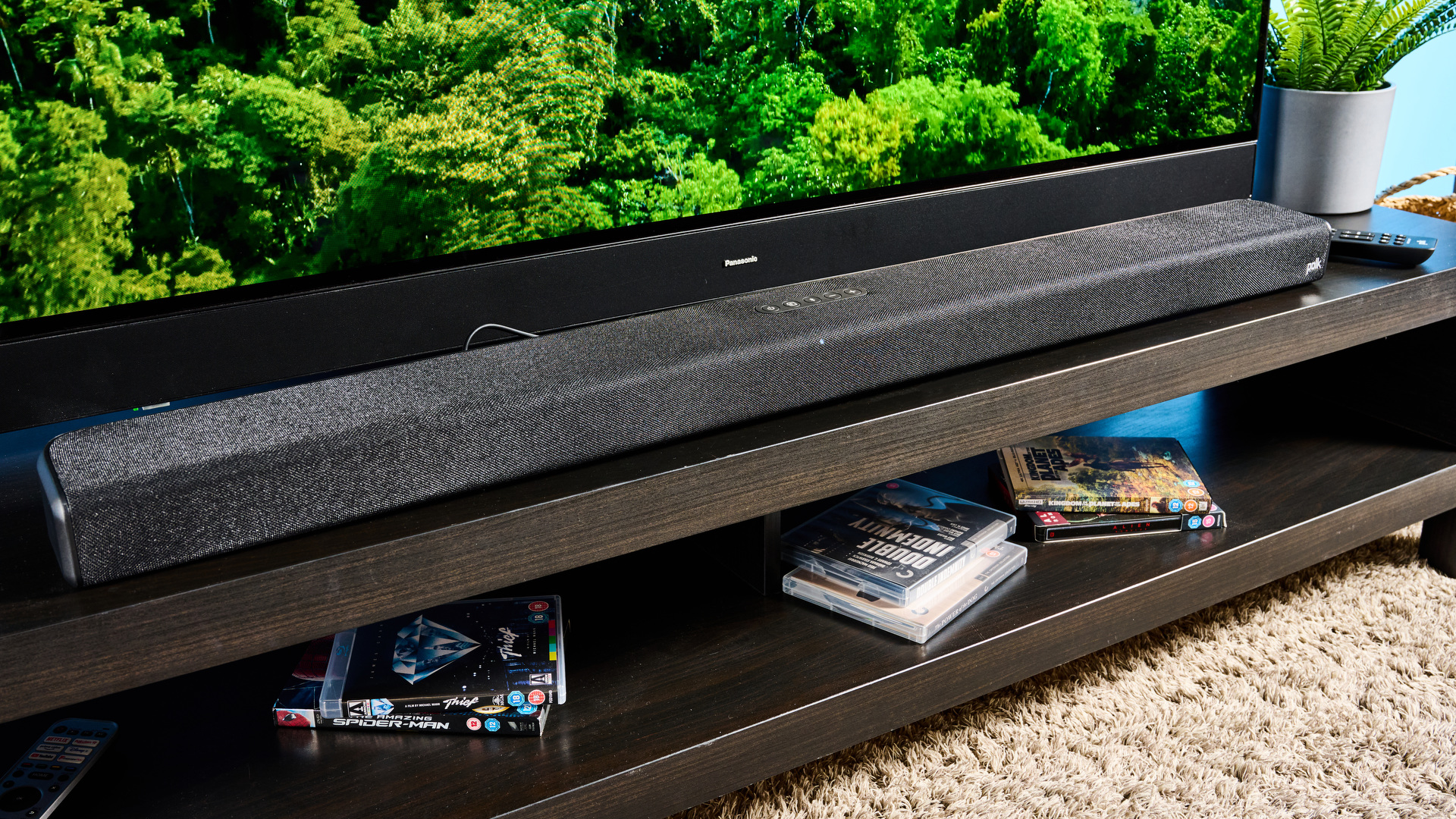
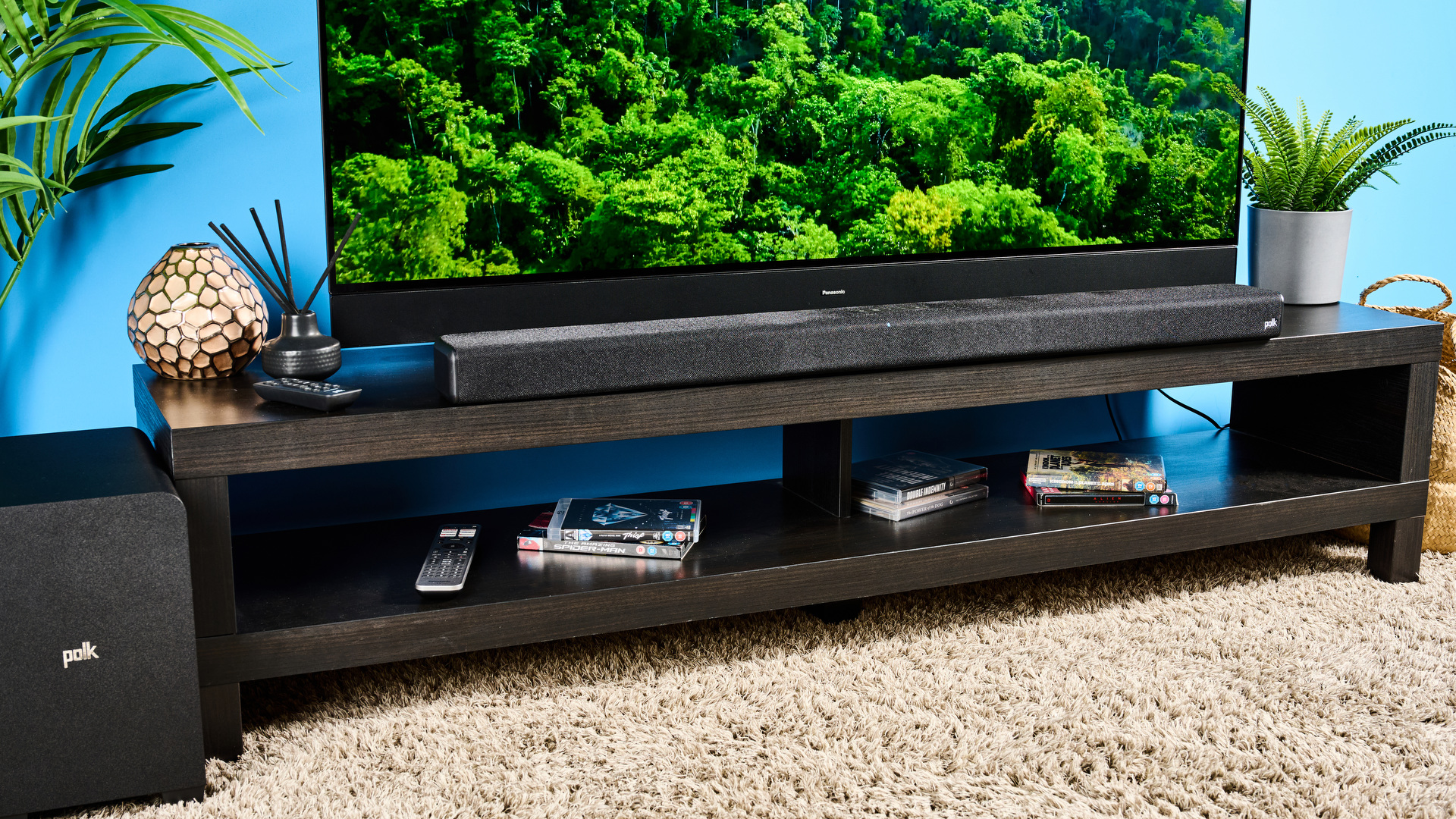
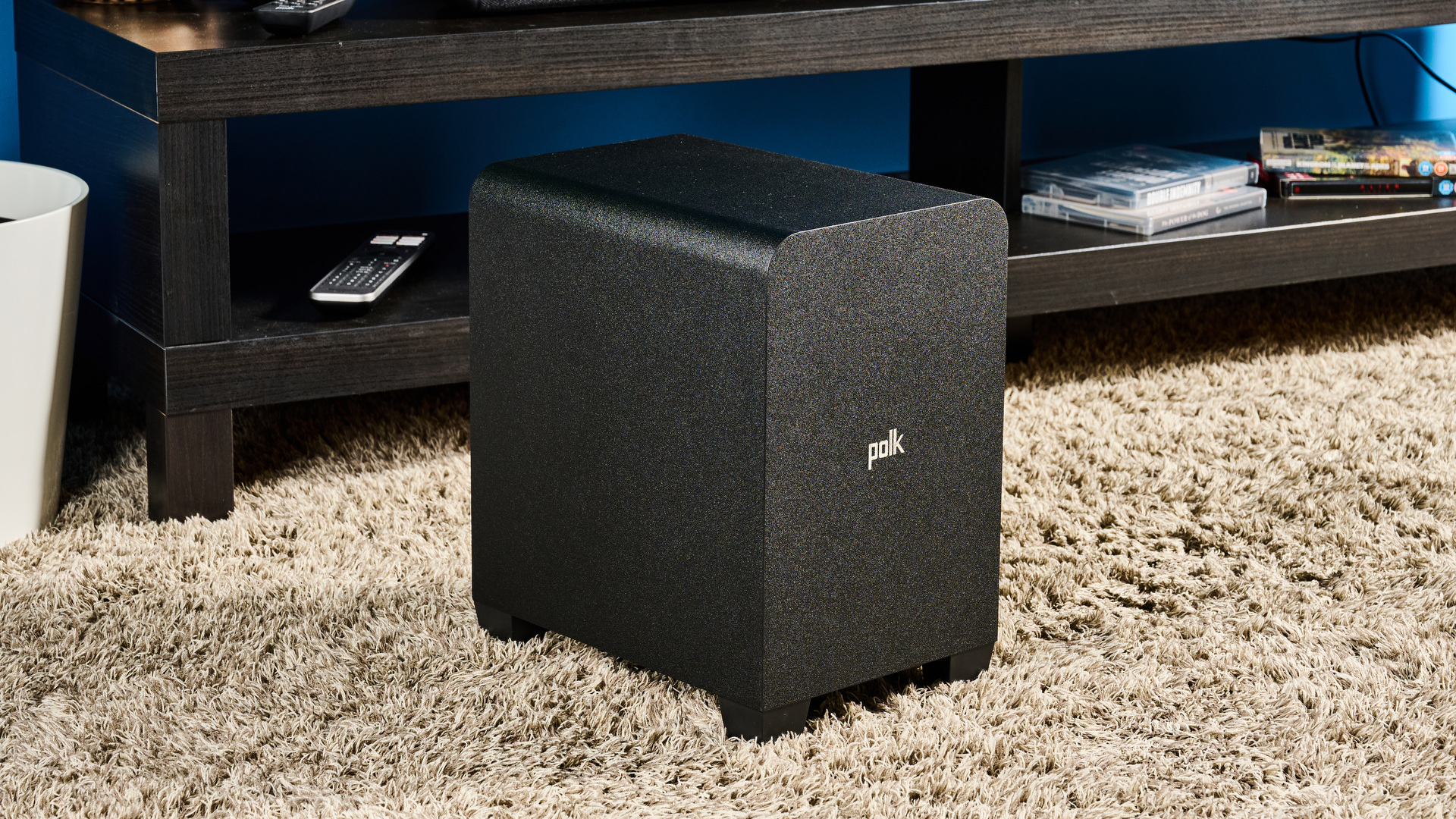
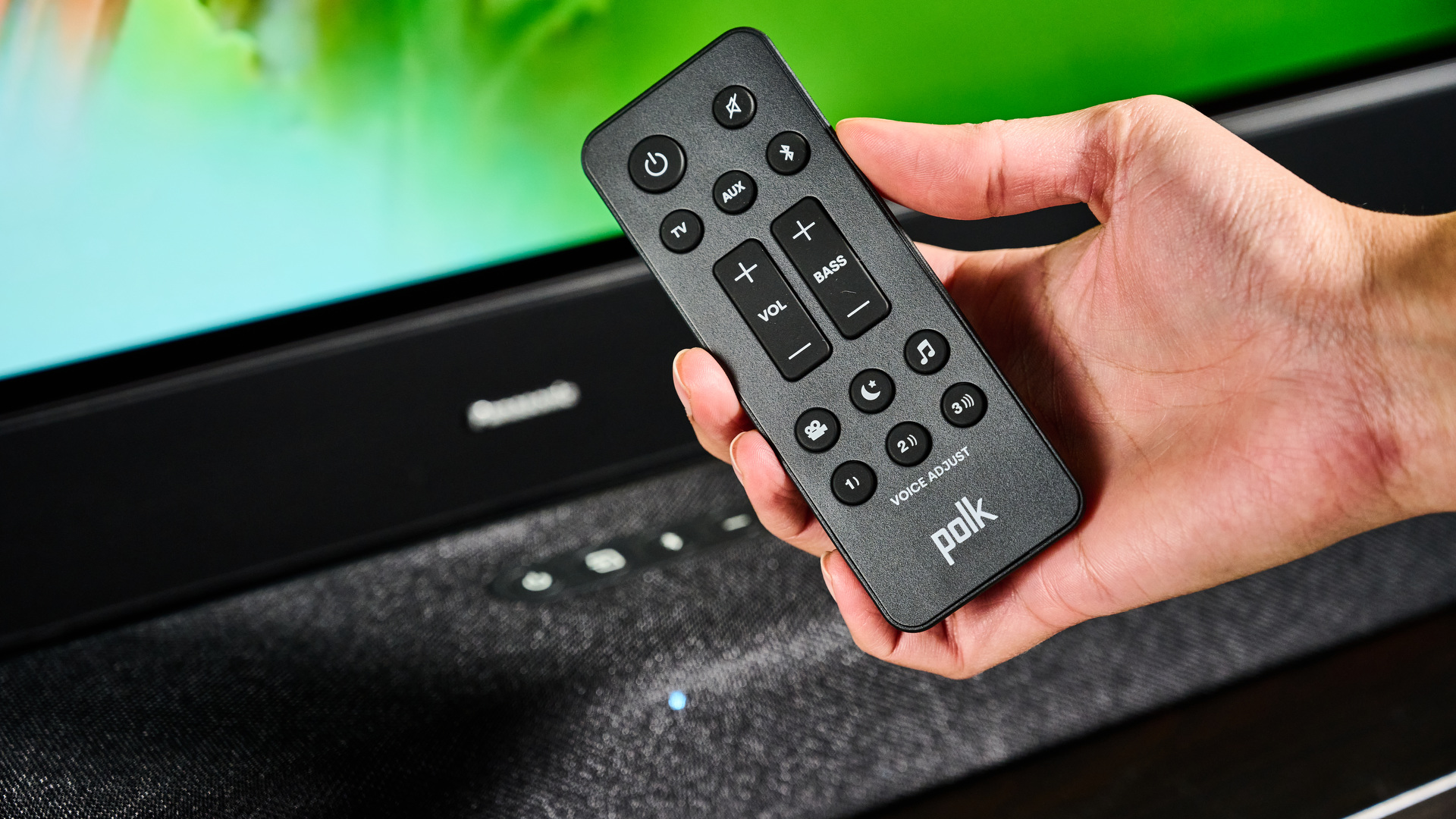
Specifications
Reasons to buy
Reasons to avoid
Setup: Thanks to a lack of Wi-Fi or any kind of extra smart features, Erin found setting up the Signa S4 a breeze. You just plug the soundbar and subwoofer into the wall, and then plug the soundbar into the eARC HDMI port of your wall.
From there, you just switch the sub on and toggle the 'connect' switch, and you're away. It's about as easy as a soundbar setup gets — although that does mean there are no extra features in an app.
What extras are there have to be toggled with the physical controls on top, like Bluetooth or the various voice modes. There's a barebones remote control as well.
How big is it? The Signa S4 is slightly larger than other options at this price point, which makes for a more impressive audio experience. It's 41 inches long, which dominates smaller 32-48-inch TVs.
It's only around 2.5 inches tall, though, so it will fit effortlessly underneath any TVs that you might pair it with. It matched perfectly with the Tom's Guide 50-inch reference TV, so TVs that are slightly larger are going to be fine as well. Just make sure there's enough space on your TV stand — if your TV is wider than your stand, you might have issues with the Signa.
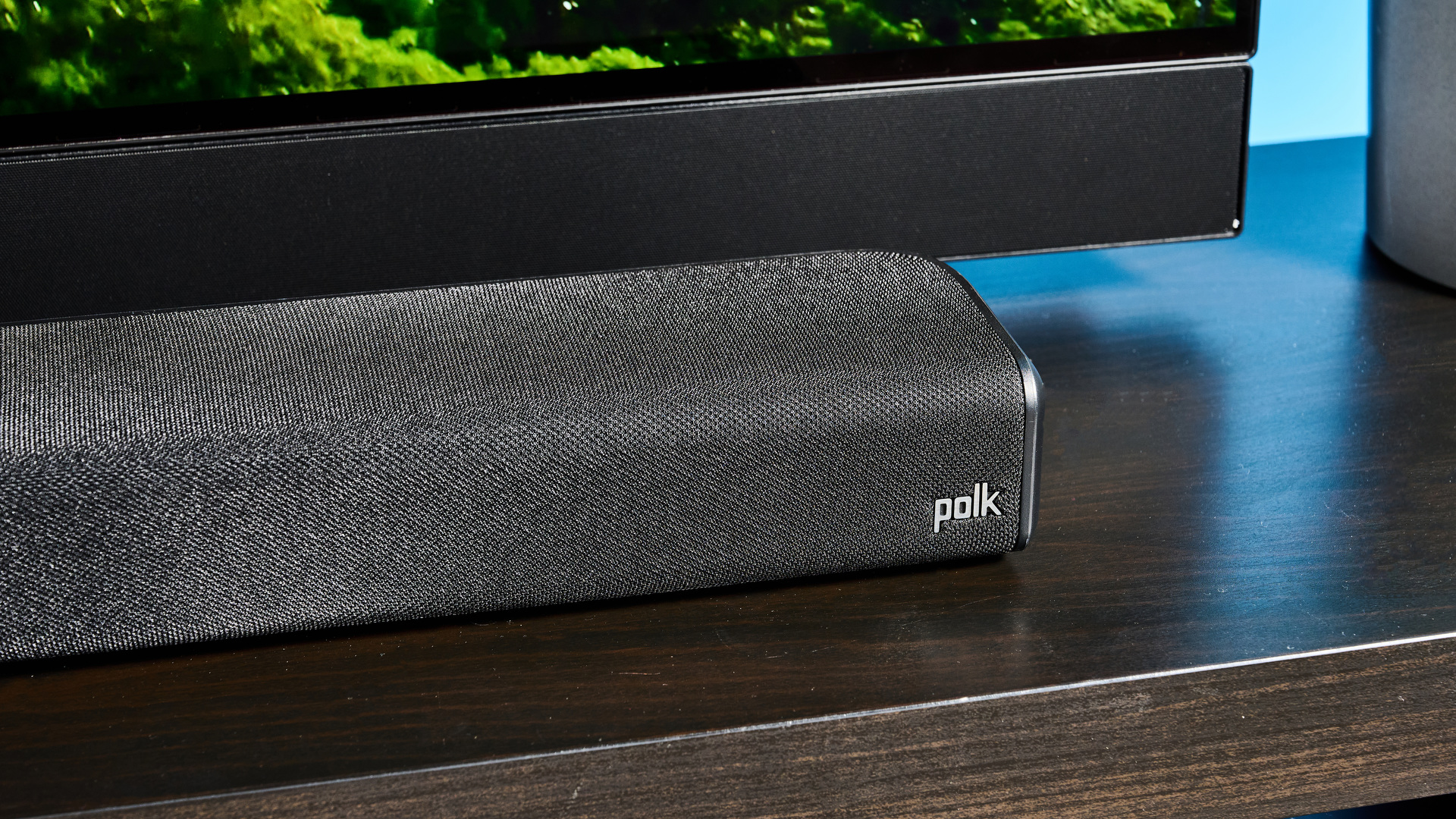
Are there any extras? The biggest extra that comes with the soundbar is the wireless subwoofer — a massive bonus for something that costs under $400. That lets the bar sound much bigger than options that arrive sans-subwoofer.
Other than that, there's the remote control, and nothing else. You can't upgrade with extra surround speakers as you might with other options like the slightly more expensive Sonos Beam Gen 2.
Sound: Erin was blown away by the sound of the Signa S4. Considering its size and price, it sounded much bigger and gave a surprisingly well-rounded Dolby Atmos performance — especially considering its lack of dedicated surrounds.
The bass from the subwoofer was very solid, and the upfiring speakers inside the soundbar made sounds come from all around the listener. Erin was particularly impressed with the movie "Wild Robot," and its surround sound elements that made characters sound like they were all around her.
The sound modes are mostly useful, although the Night Mode turned out to be worth avoiding. It destroyed the sound quality overall and didn't do much in return.
- Read the Polk Audio Signa S4 review
Best all-in-one soundbar
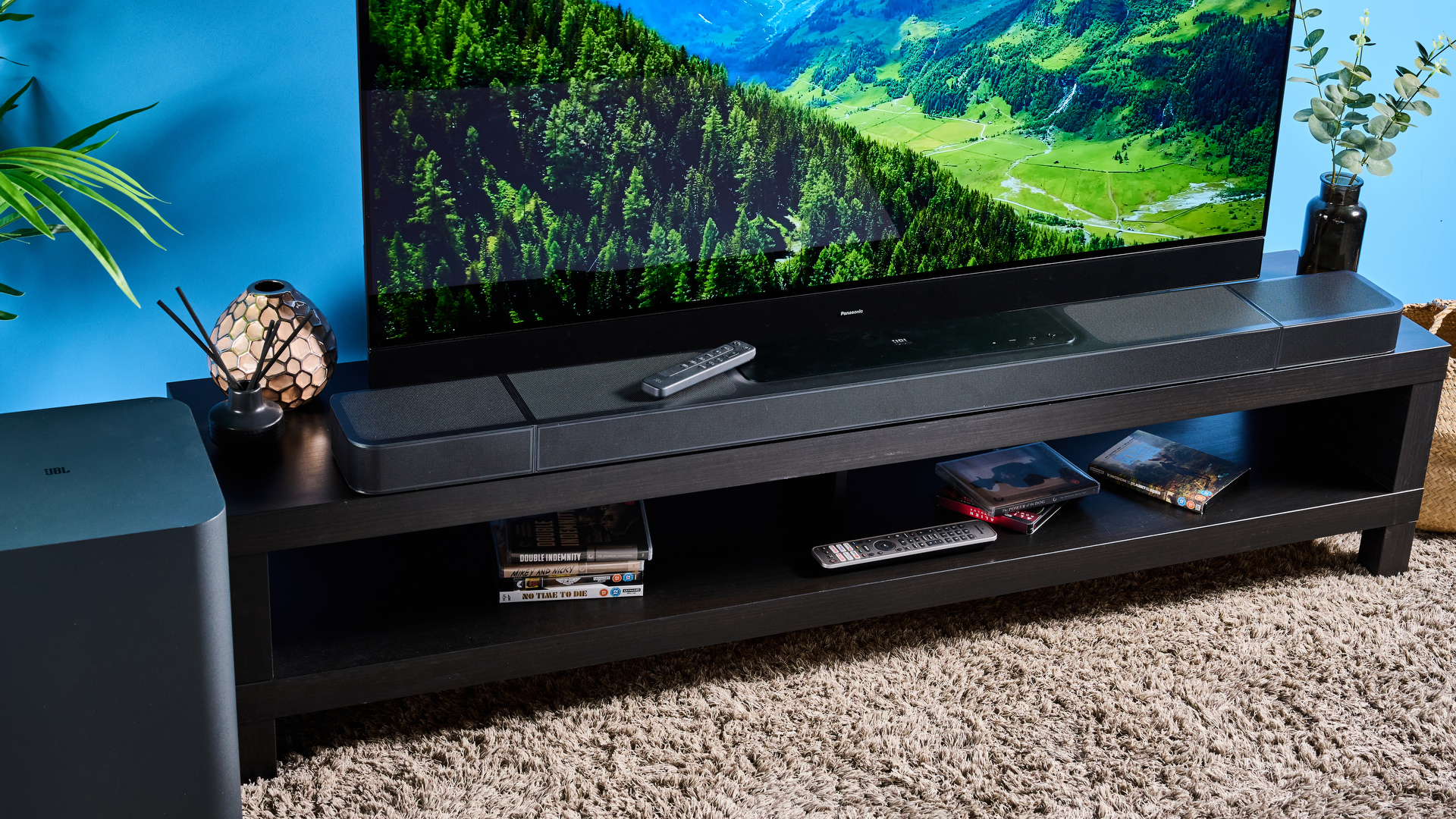
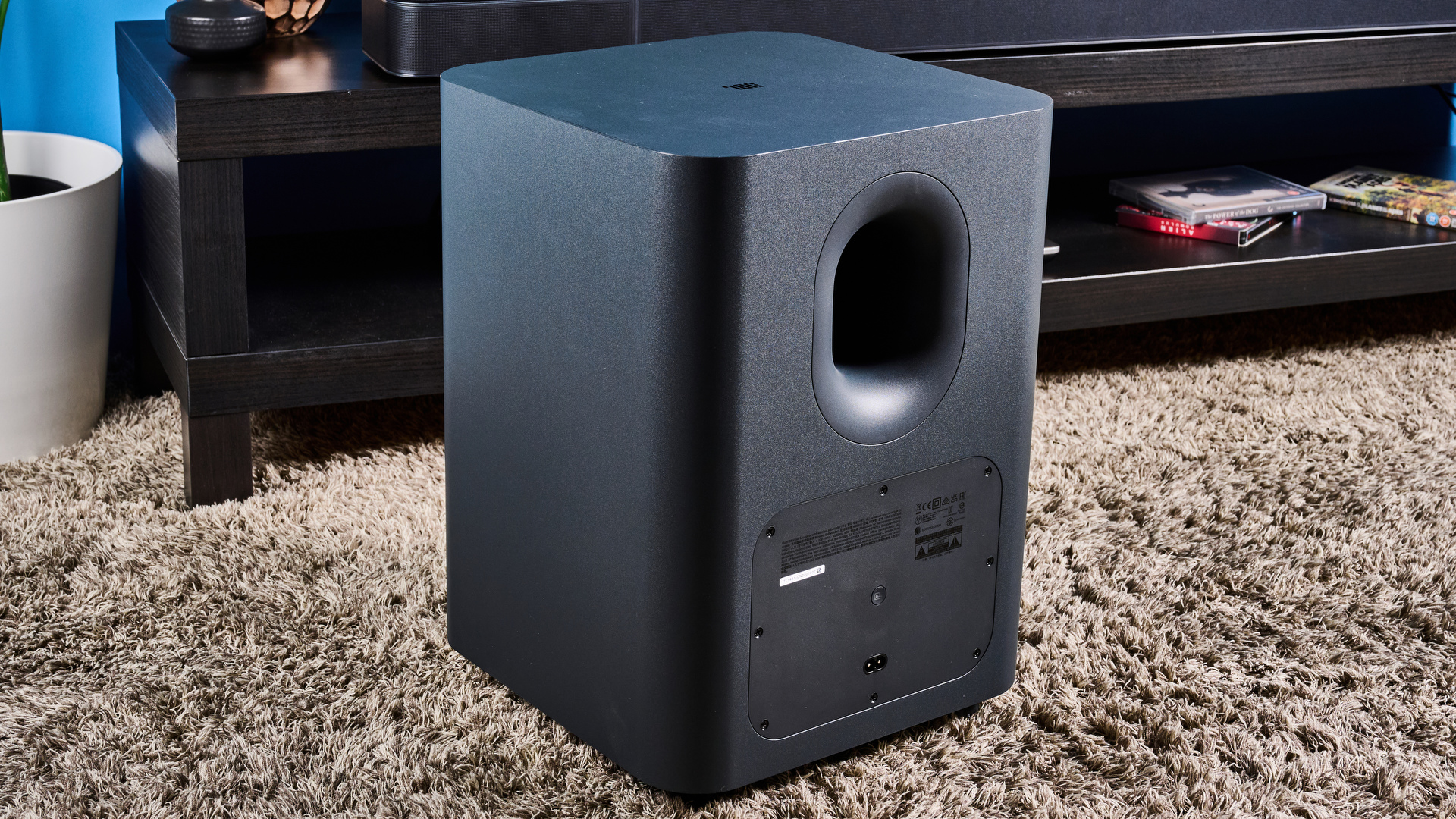
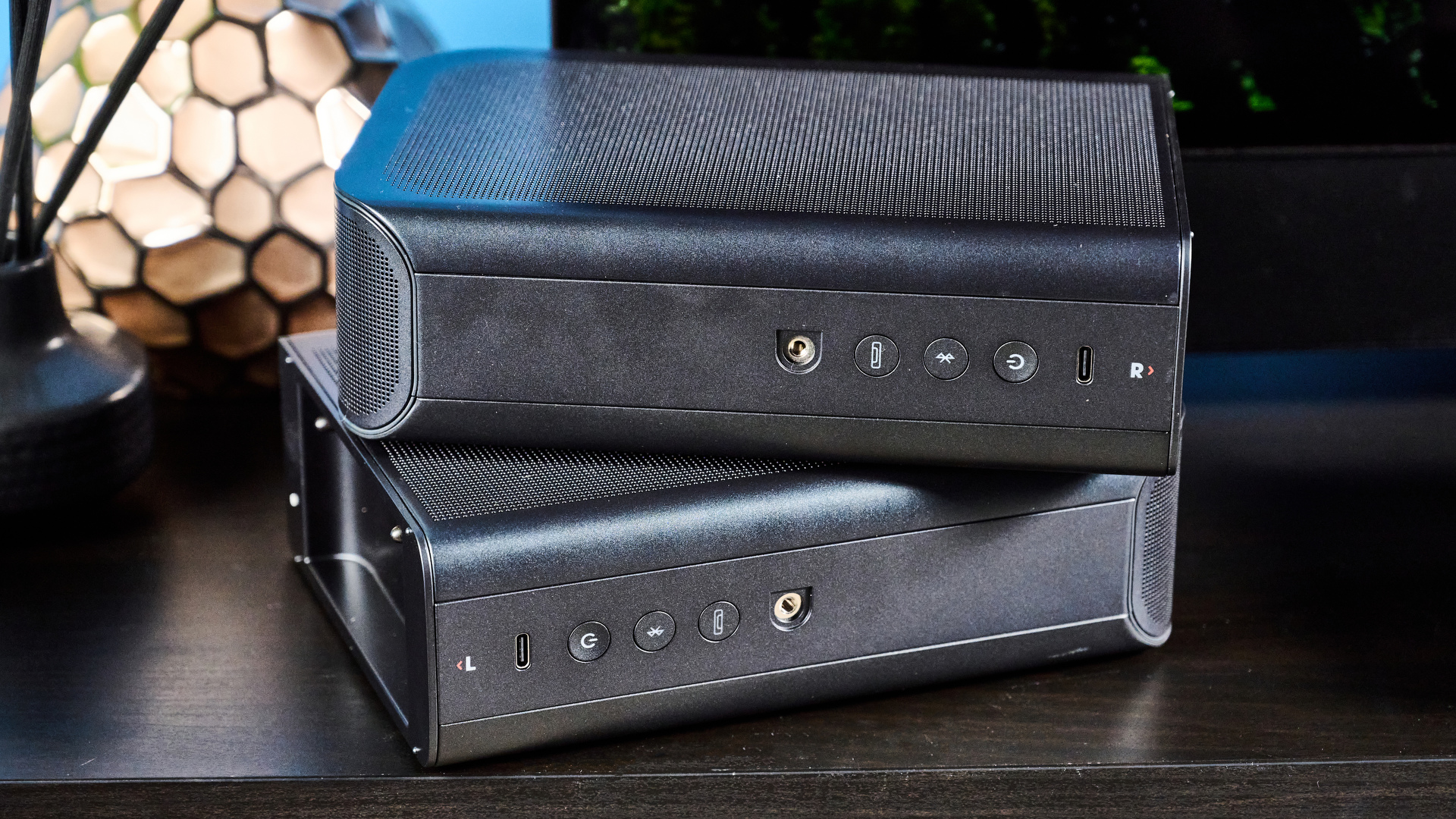
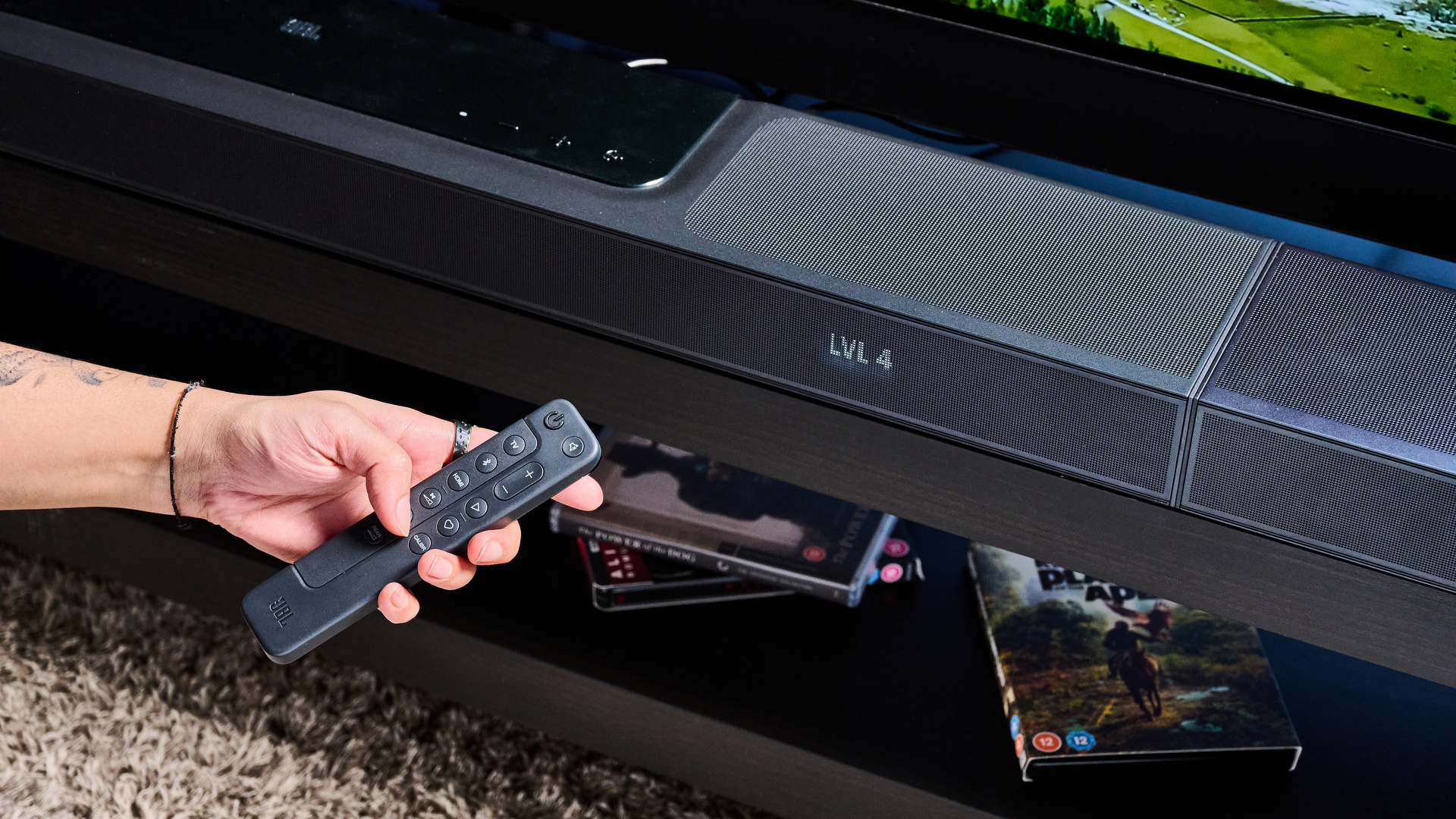
Specifications
Reasons to buy
Reasons to avoid
Setup: Setup with the Bar 1300X is slightly more involved than the other bars on the list, but it's made a whole lot simpler thanks to the ample instructions and user-friendly design.
Just plug the soundbar and subwoofer into the wall, and then plug the soundbar into the eARC port of your TV. Then you disconnect the two rear surround speakers from the main soundbar, and place them around the room according to the instructions.
You might find some wireless communication issues with the surrounds, but a quick connect and disconnect will fix it. You'll also need to make sure you keep them charged.
Internet and Wi-Fi duties are handled by the JBL ONE app, where you connect the correct Wi-Fi and initiate the soundbar's smart functions. Erin had no problems at all getting the bar all setup with the app, and was watching surround sound movies in no time at all.
How big is it? The JBL bar 1300X is a big soundbar. That's even with the surround units detached from the main unit — with the units around the room, and the soundbar on your TV stand, you still need 40 inches of space. It's deep as well, measuring nearly six inches back. That means you've got to make sure your TV stand is deep enough.
We found that it worked well with bigger TVs, although its depth does cause issues with TV mounts. Make sure you've ample space between the front of the TV stand and the front edge of the TV mount — if there's not enough space, you might need to wall mount your TV.
Height-wise wise you'll be fine, though — the bar only measures around 2.5 inches tall. You'll need to find space for the surround speakers to the side of or even behind your couch, so account for that as well. They're not very large, but you'll need them to be elevated to your listening position or they won't work.
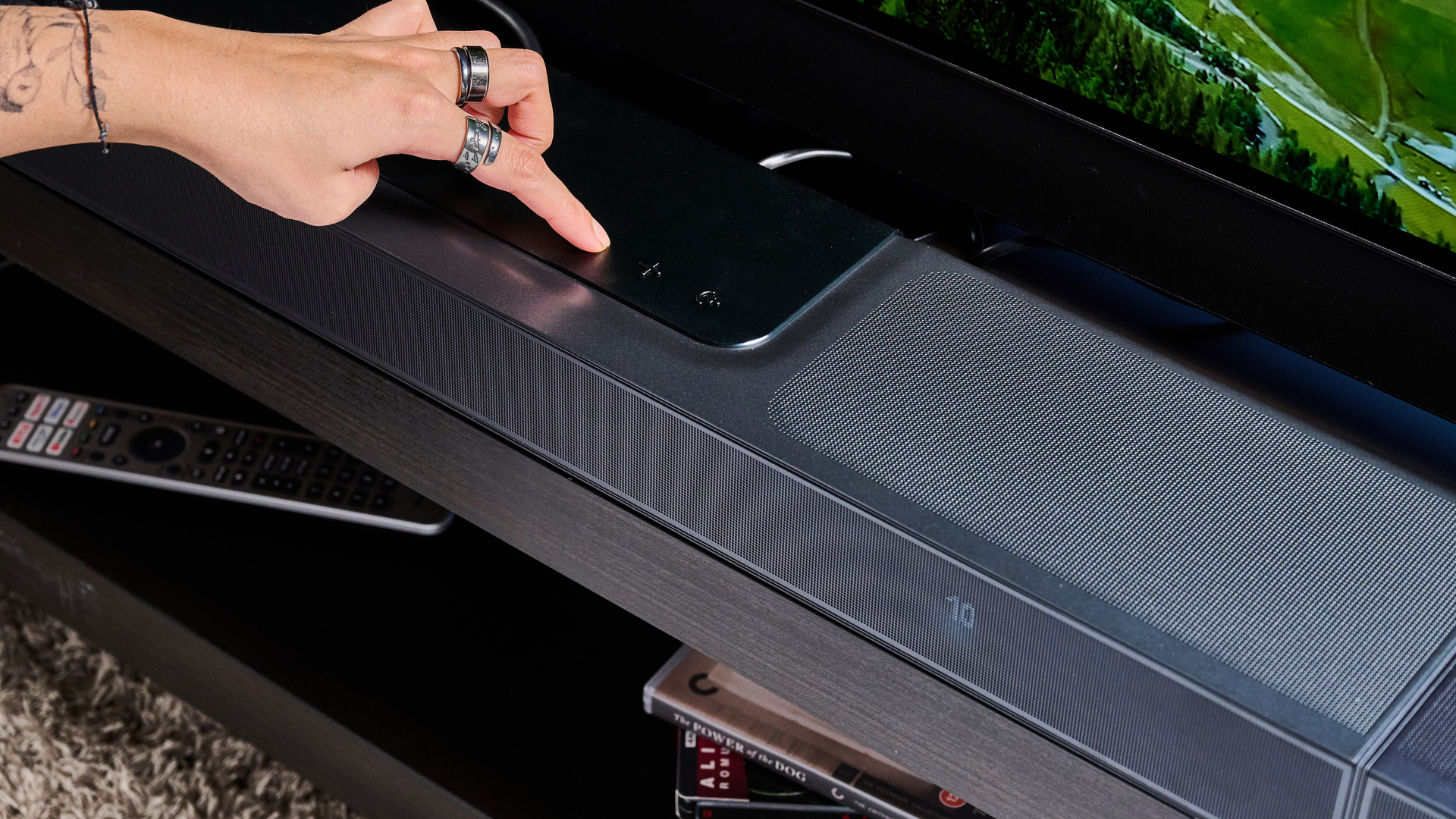
Are there any extras? In the box of the Bar 1300X, you get everything you need for an accomplished Dolby Atmos setup. The height channels are seen to by upfirers in the bar itself, but there are physical surround speakers for a more convincing movie experience.
There's also that large subwoofer that comes in the box — it might not be a cheap soundbar, but you get everything you need in the box for some incredible surround sound. There's a controller as well, although Erin found that the controller was an easy way to control the bar as well.
Sound: This is where the JBL Bar 1300X was able to stretch its muscles and show us what it sounds like. As you might expect, thanks to the subwoofer and the individual surrounds, the soundbar makes short work of Dolby Atmos mixes.
Erin was incredibly impressed with the introduction of Top Gun Maverick, bringing some epic bassy rumble and excellent surround sound. The roar of the jets, the bassy music — "It's like being at the movies!"
Dolby Atmos's performance is good, placing the sounds of the movie you're watching well into space.
For music, things were good as well, and perfect as the center audio component of a modern living room. There was plenty of groove for dance tracks, and detail galore to enjoy. For an all-in-one boxed system, it's excellent.
- Read the JBL Bar 1300X review
Best value soundbar
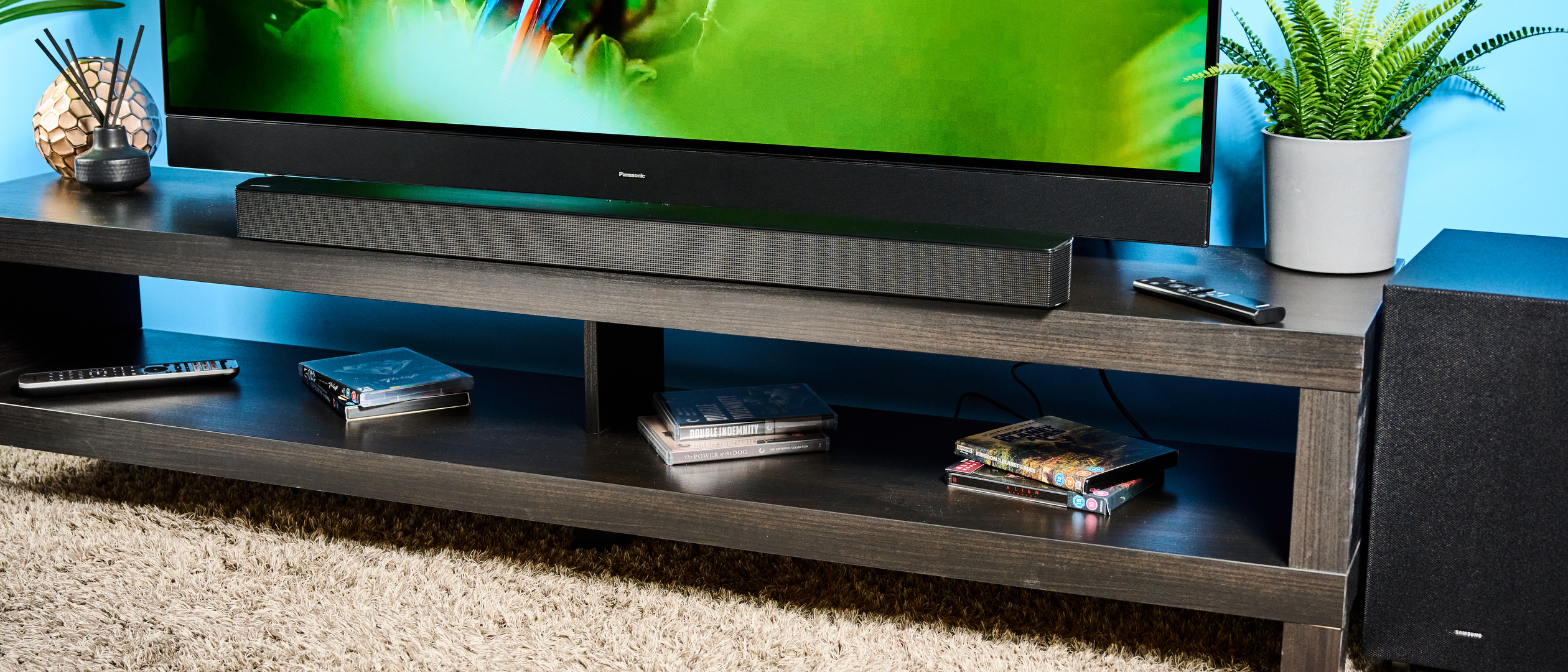
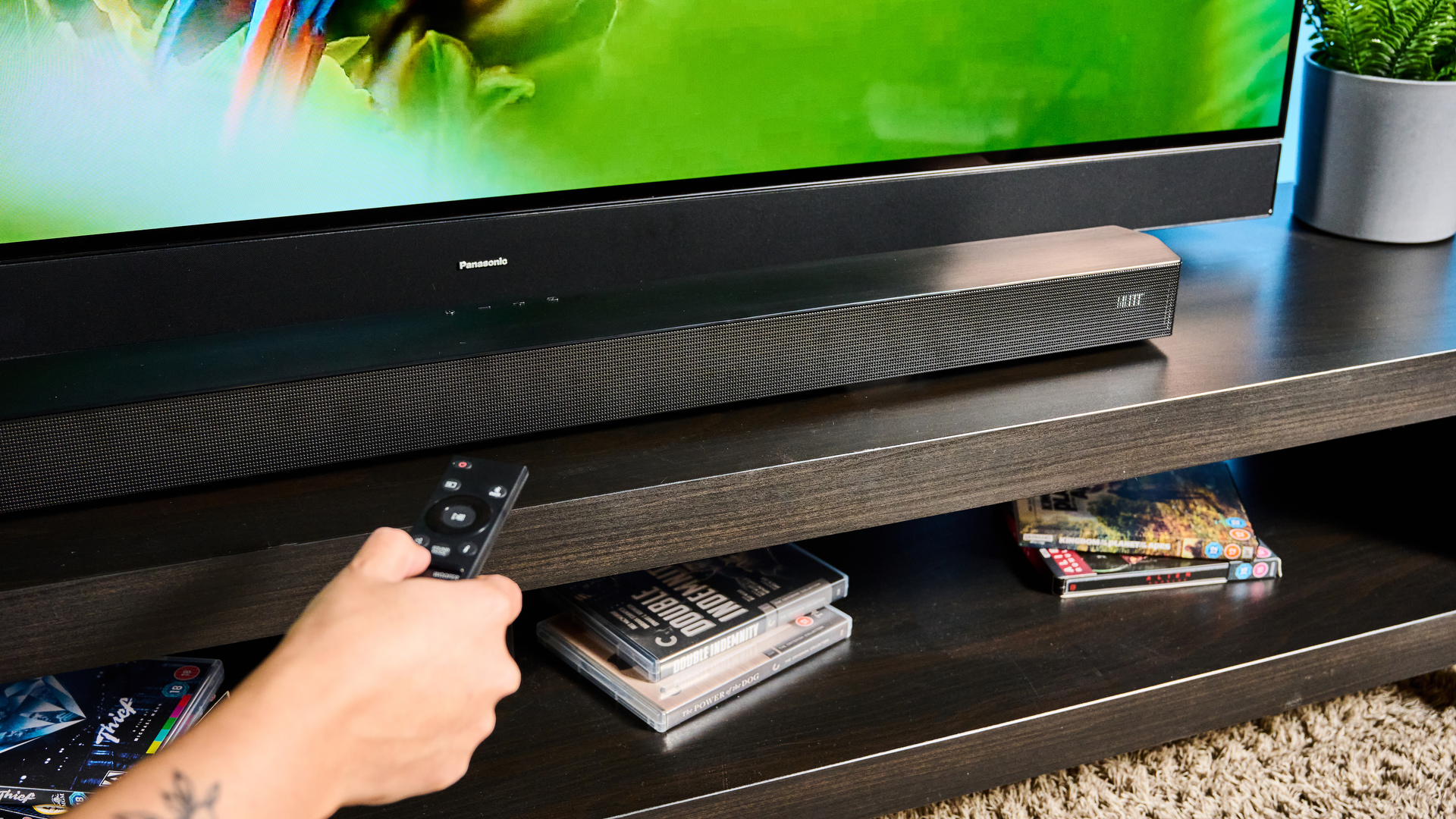
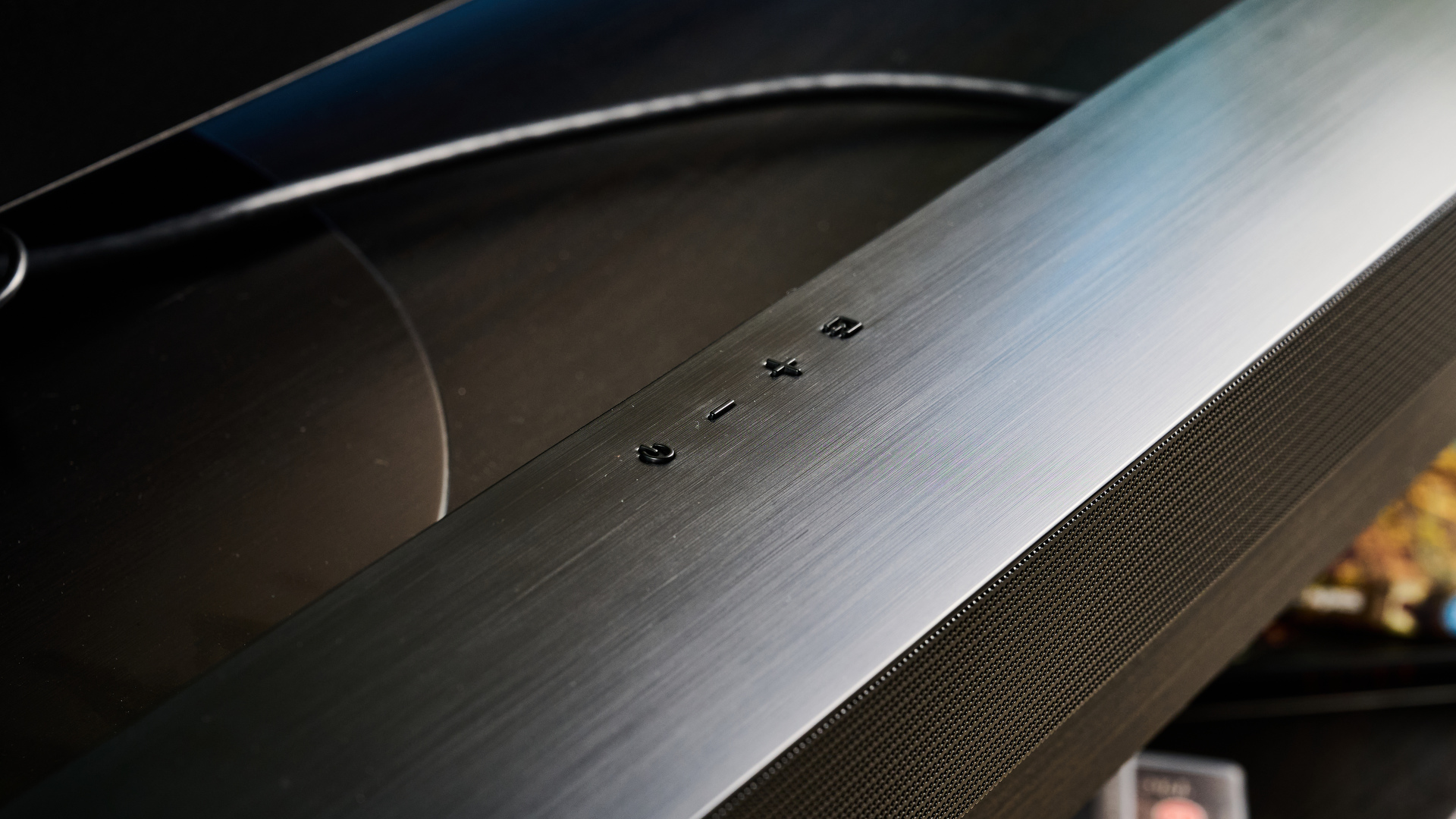
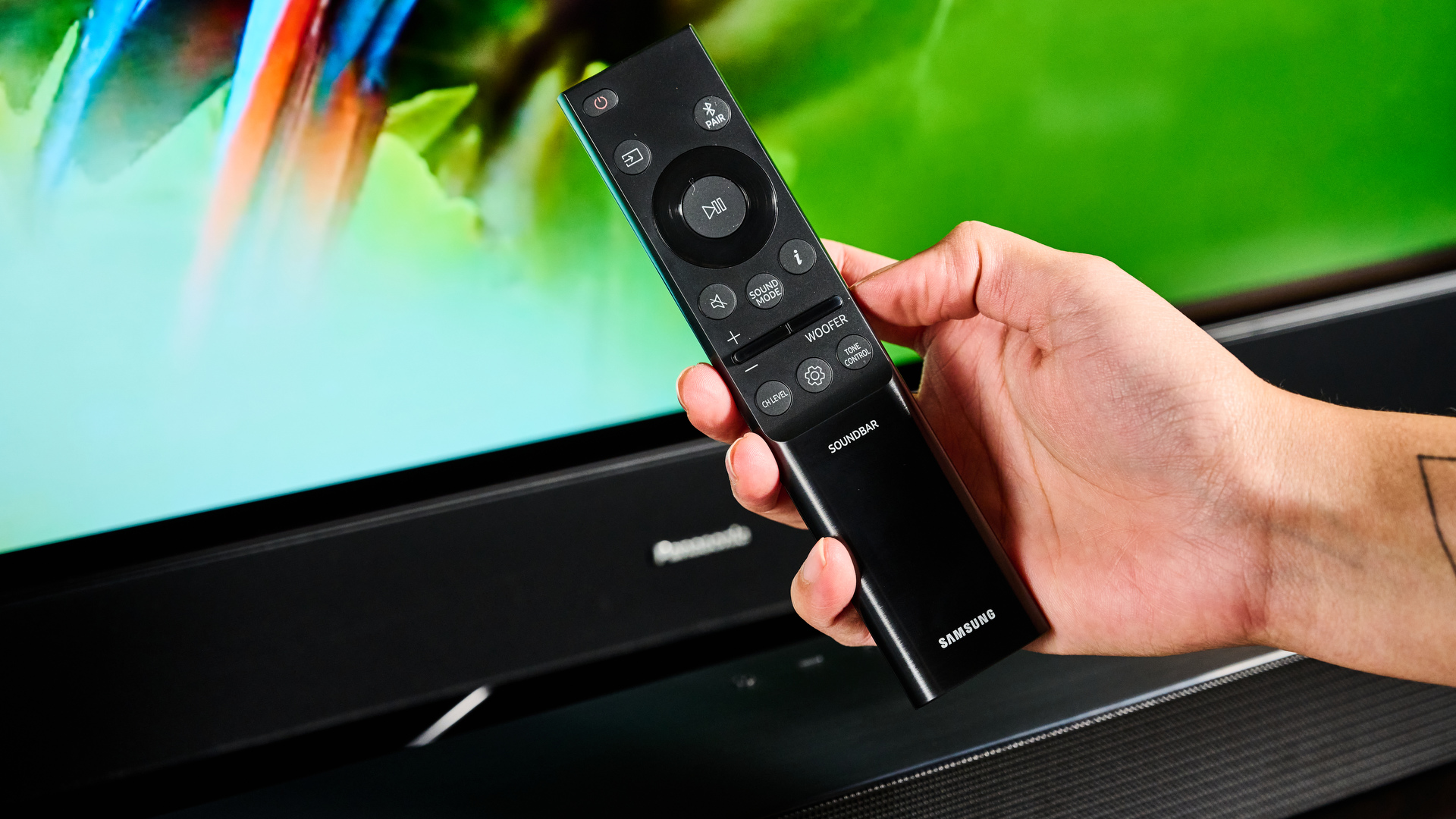
Specifications
Reasons to buy
Reasons to avoid
Setup: Setting the soundbar straight out of the box was about as easy as it comes. All you need to do is plug the soundbar into power, and then plug the HDMI cable into the eARC port of your TV. The Subwoofer plugs into the wall, and then into the back of the soundbar.
No app, no Wi-Fi, just effortless simplicity. You might have to play around with the settings as Erin did to get the best sound possible — worth bearing in mind if you want something that's completely plug-and-play.
How big is it? The soundbar itself is 39 inches long, which is about par for the course with soundbars of this price. That'll fit with most TV sizes, although smaller TVs like 32-48 inch screens are becoming ever-dwarfed by soundbars in the budget category.
It wasn't dwarfed by the Tom's Guide testing TV either, so those with larger TVs shouldn't worry. Remember that there's also a subwoofer in the box as well, and you'll need to have room for its 13-inch tall frame.
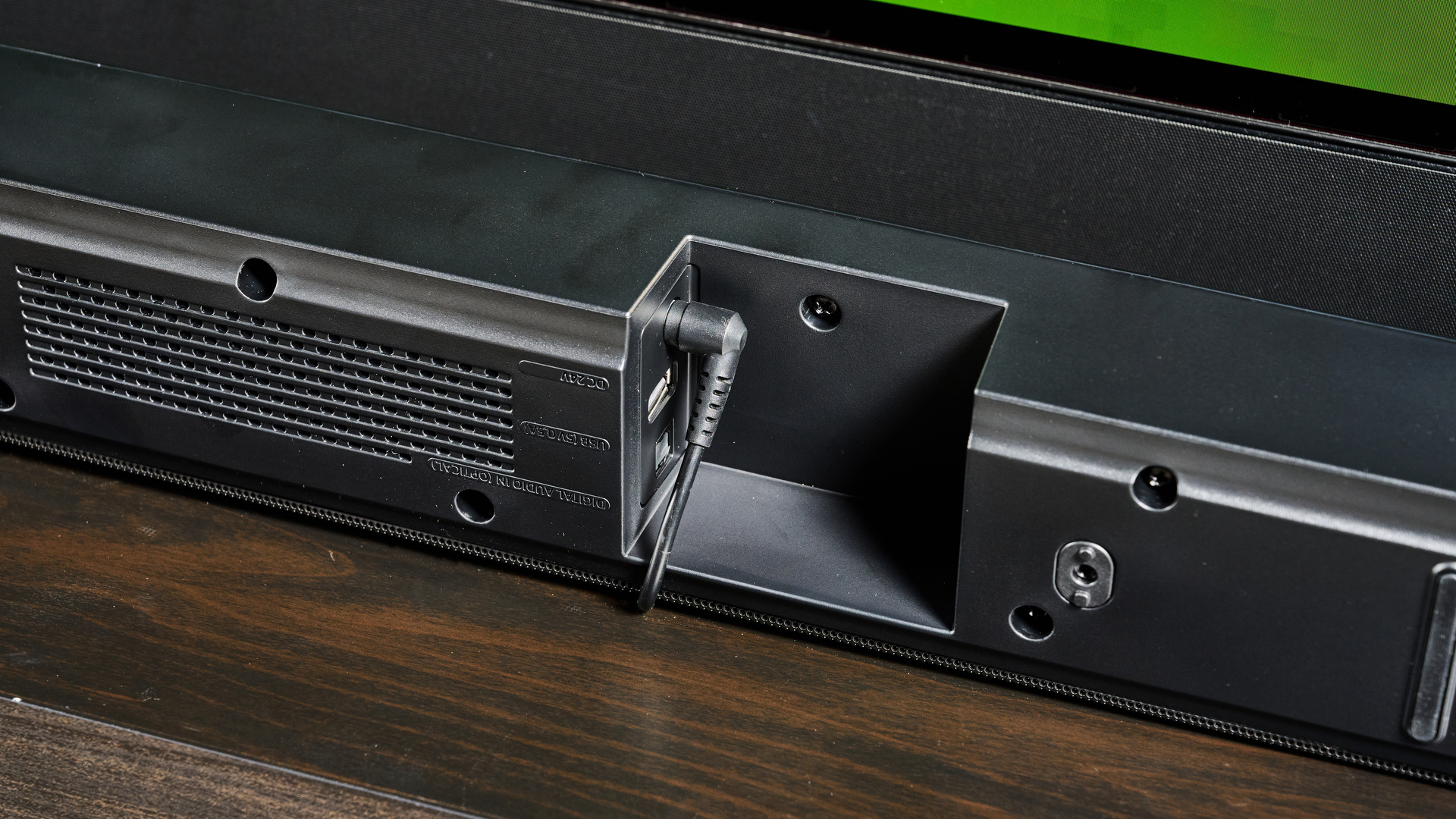
Are there any extras? There aren't any extras you can buy to upgrade the soundbar, but there's the included wired subwoofer that comes in the box to add some extra low-end grumble.
The controller in the box is one of the best around, and immediately recognizable to anyone with a Samsung TV. You don't need to use it much though, considering the eARC support can control the bar with your normal TV remote.
Sound: Considering its size and it's price, the Samsung HW-B650 is a very solid sonic performer. It doesn't quite reach the lofty Dolby Atmos performance of the Polk Signa 4 above, but it's DTS:X surround is still very good.
Movies are a whole load of fun, and much bassier thanks to the solid included subwoofer. The virtual sound Erin found to be very competent, placing the elements of Top Gun's opening scene exactly in the right spots. TV watching showed an increase in sonic space, as well as improved dialog clarity.
Music wasn't quite as good, although it's still better than the sound of your TV speakers.
- Read the Samsung HW-B650 review
Best compact soundbar
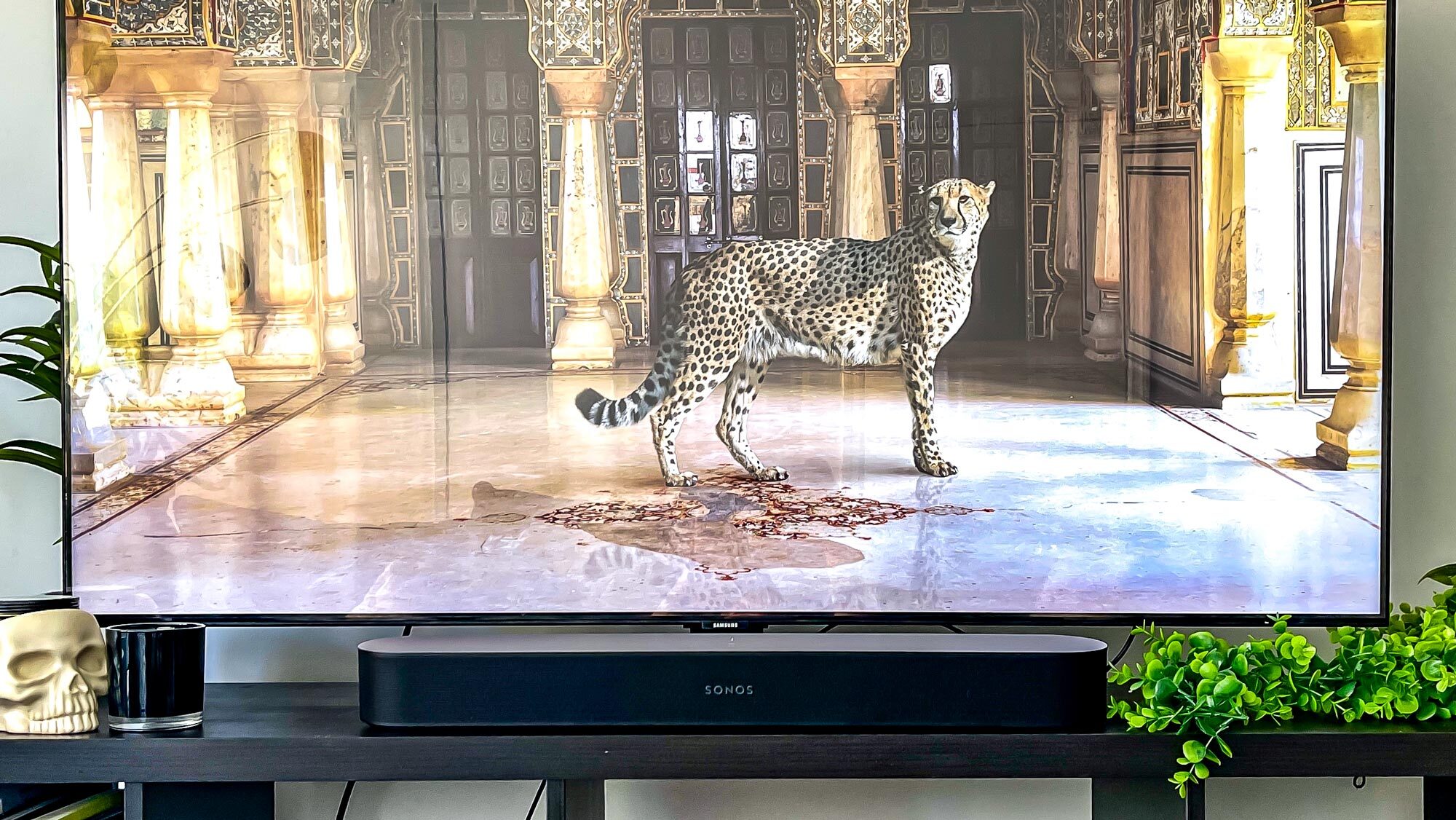
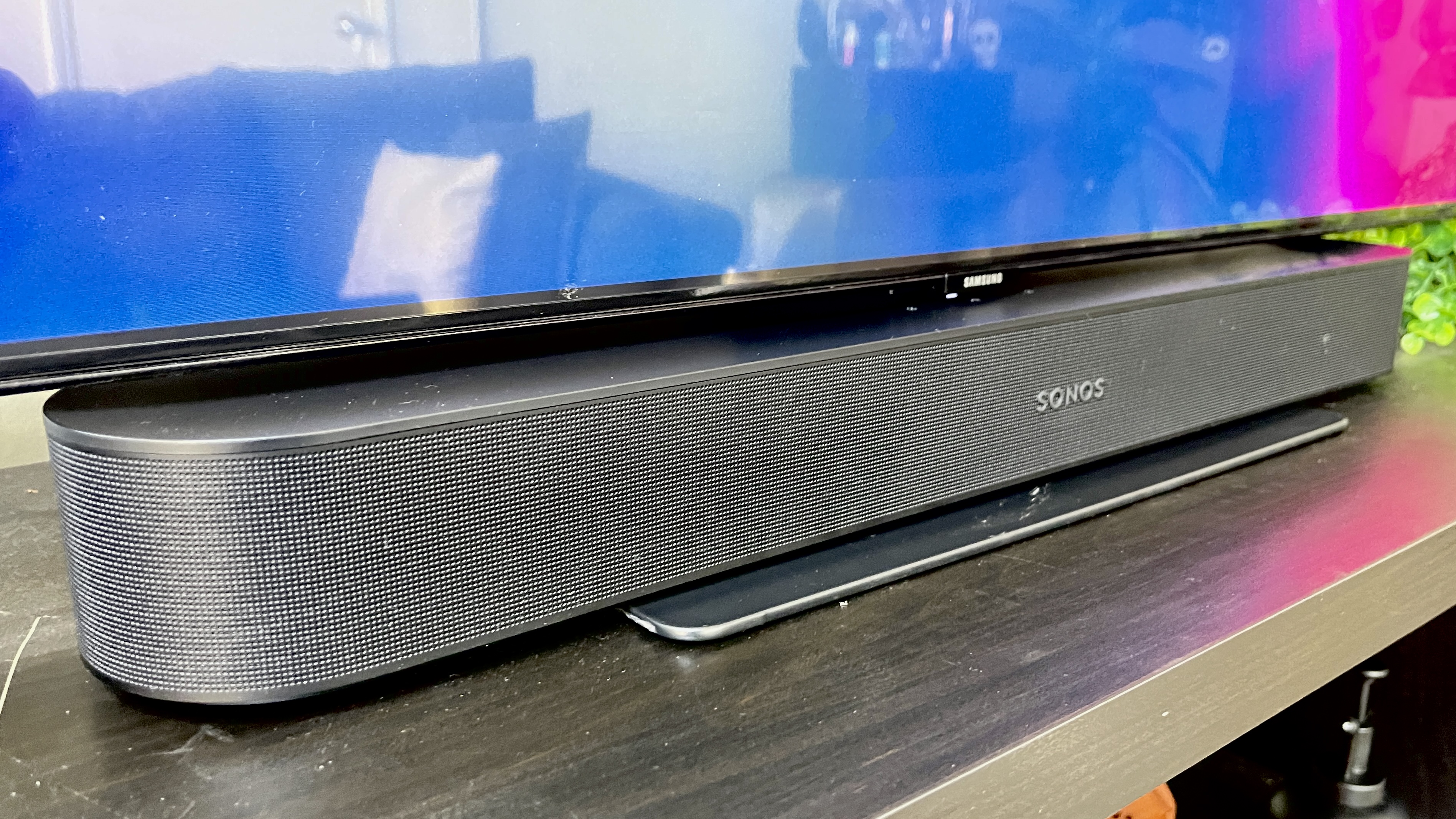
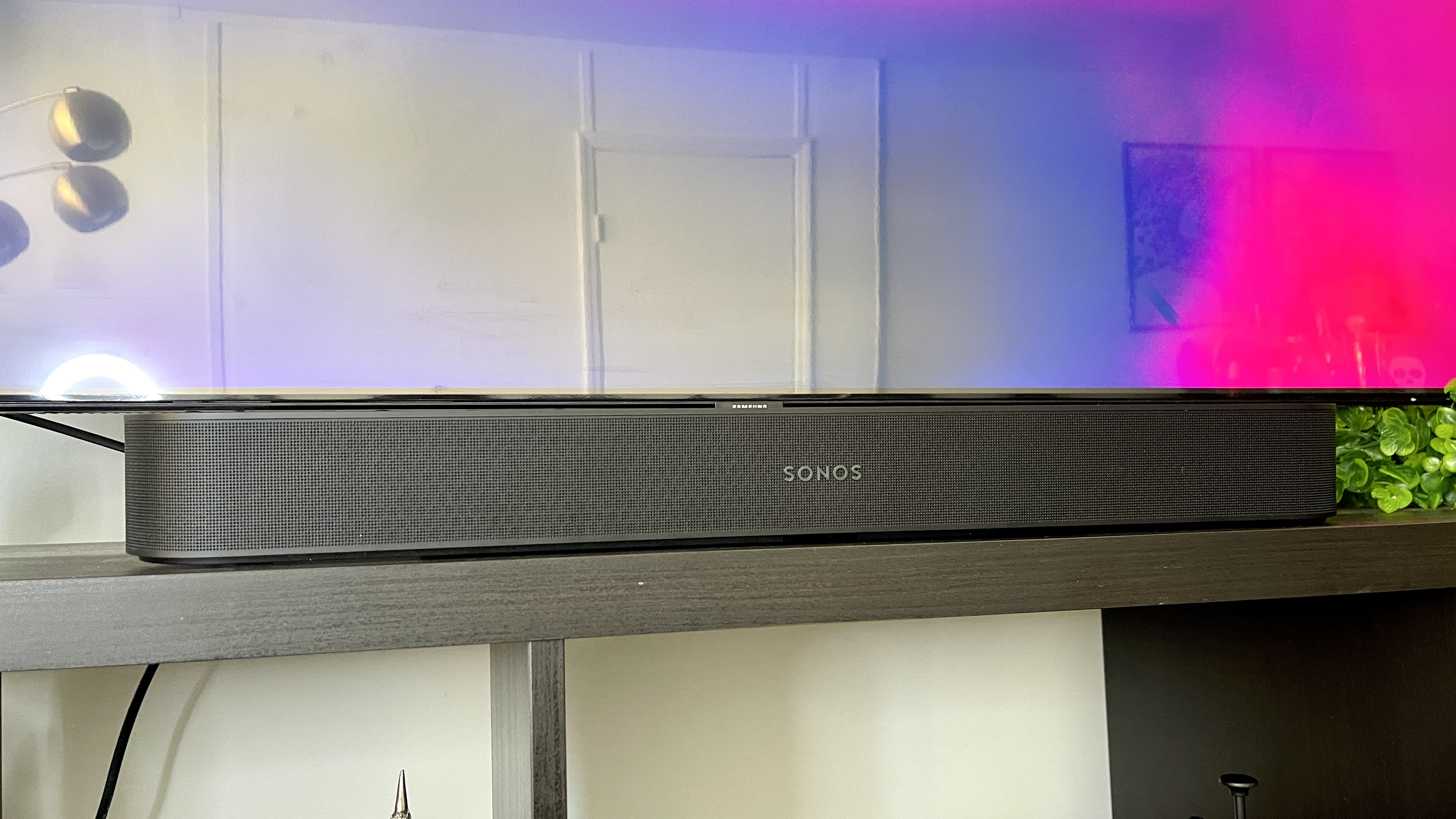
Specifications
Reasons to buy
Reasons to avoid
Setup: Setting up the Sonos Beam Gen 2 is fairly easy, although like its bigger Arc Ultra sibling, you're going to need to get the Sonos app out to get it fully integrated into your living room.
You plug the soundbar into the wall, and then into the TV's eARC port. In theory, you could leave it here, but if you want the best Dolby Atmos possible, you'll need to hook it up to the Wi-Fi.
Again, you'll be using Sonos' app for this — and while it's a whole lot better than it was, there are still issues. Bear this in mind if you're looking to buy a Sonos Beam Gen 2. This is how you access the smart functions, like Sonos Voice control as well.
How big is it? The Beam is a compact soundbar. It's only 25 inches long, making it perfect for TV sets that are around 32-48 inches. Any bigger than that and the soundbar will be dwarfed, and the surround sound won't match the picture as accurately.
This is a soundbar for small rooms, mind you, so it's not supposed to be big.
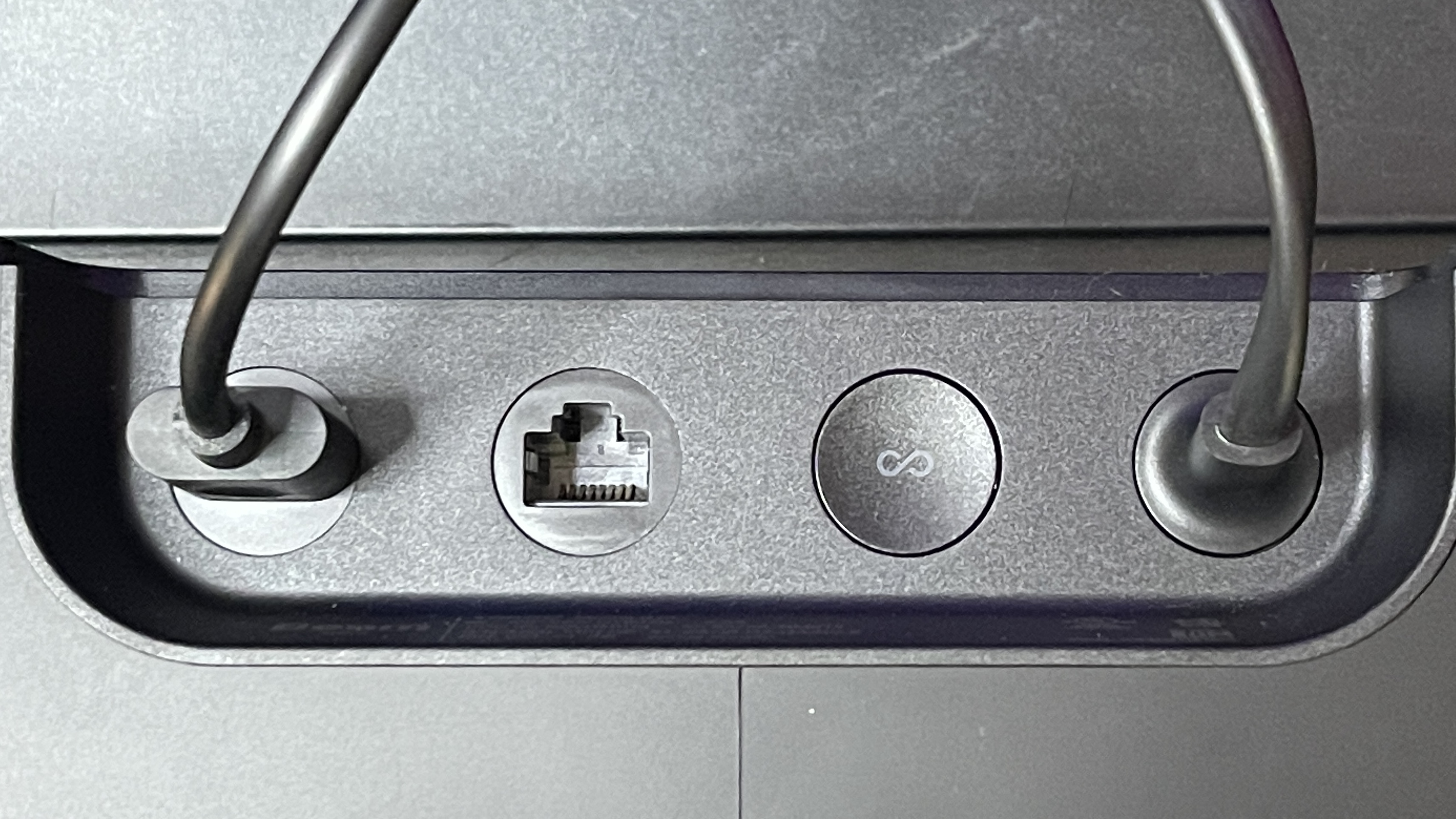
Are there any extras? There's nothing in the box of the Beam Gen 2, apart from the soundbar itself. But you can buy separate devices if you want to upgrade your experience.
The Beam will connect to Sonos speakers like the Era 100 and 300 as surrounds, and you can add a Sonos sub (I'd recommend the mini) for some extra low-end rumble. That does add extra cost, of course, so be ready to spend if you want the Beam to sound its best.
There's also no remote in the box — you can control the volume with your TV remote, thanks to eARC, but everything else has to be done with the app. Which is, unfortunately, still not the most reliable.
Sound: When you realise how small it is, the Sonos Beam Gen 2 is a little sonic powerhouse. There's a surprising amount of low end on board, perfect for small-room movie watching, and the Dolby Atmos is surprisingly effective for something so small.
Music sounds good too, with Sonos' signature warmth. It's a great-sounding soundbar — although if you want the really low stuff, you should think about adding a subwoofer.
- Read the Sonos Beam Gen 2 review
Also tested
I've seen loads of soundbars pass over Tom's Guide's testing table, and while there are some excellent options out there, not all of them can fit onto one list.
That doesn't mean they're bad, by any stretch of the imagination — and they might just be the best soundbar for you. Here are some of the soundbars that we liked testing:
★★★★☆
This surround package is a very solid option for a not-unreasonable price. There's some excellent sound quality on board, as well as 11 different audio channels and separate surround speakers for a mind-blowing movie experience. It's a great soundbar, but it's sound and value wheren't quite up there with the options above. Perfect if you want the cinema experience without breaking the bank, though.
★★★★1/2
With its built-in subwoofer and quality sound profile, the 3.1 channel Sony HT-s2000 is a solid option for simple surround that doesn't cost the world. Its smaller sub (because it's inside the bar) means that the bass isn't as good as those on this list with a separate unit, but it's got some impact for an all-in-one unit.
★★★★☆
If you want something that looks super sleek and tidy, then the True X Bar is a great option. Its Dolby Atmos performance is admirable, and the price is right at $499 — although for best results, you'll need to spend a little more and grab yourself a subwoofer.
How to choose the best soundbar for you
How easy do you want it to be to use?
Why you can trust Tom's Guide
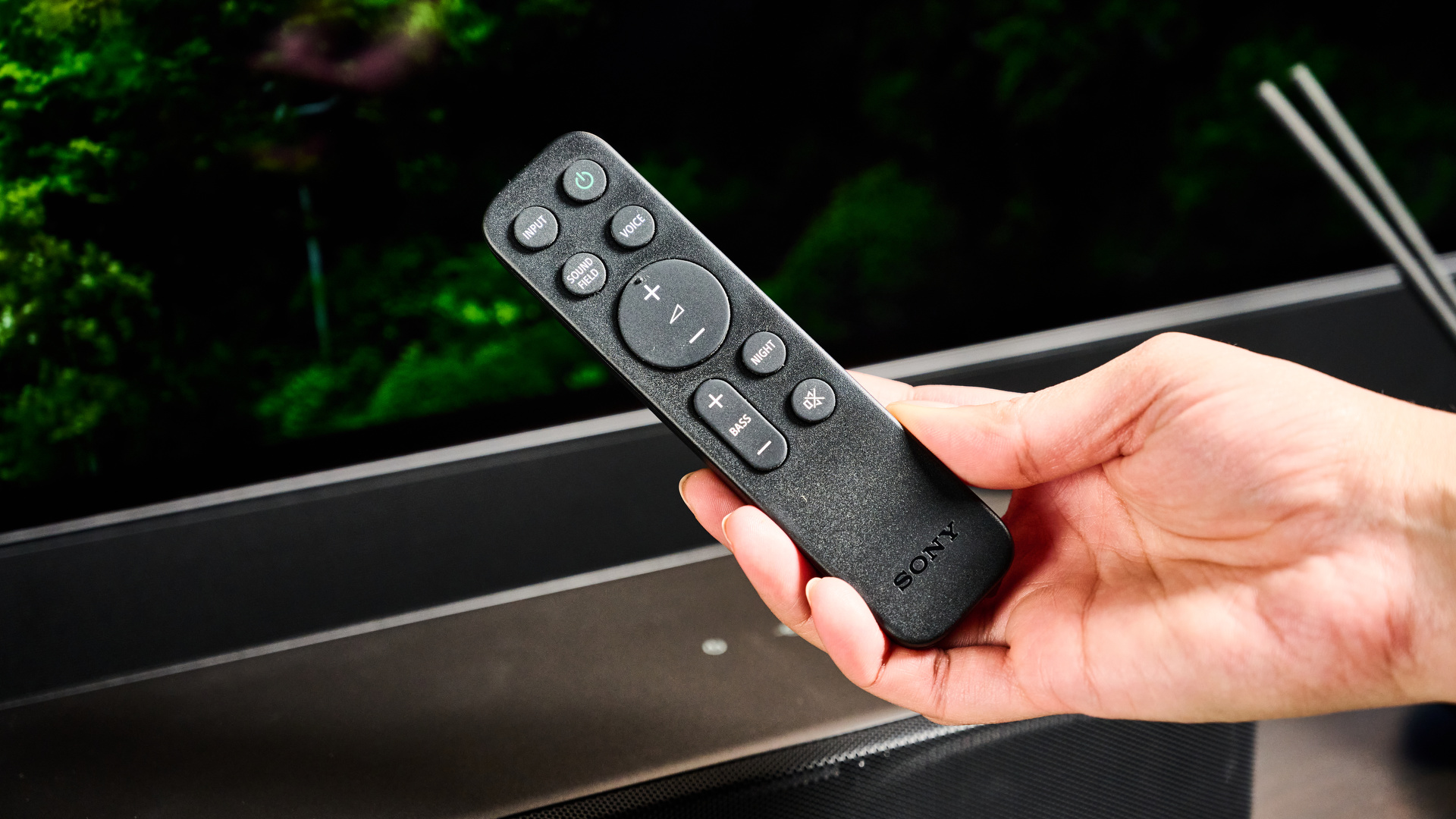
One of the best bits of most modern soundbars is that they're all simple to use in some form or another — but if you want something that you just plug in and use, then you'll want to avoid any with smart features.
While those smart features can make them sound better, or work for different types of content, they add complexity. An app might make it possible to access room EQs and the like, it also makes it more complicated for the end user.
Avoid soundbars with Wi-Fi and apps if you just want something that plugs in and works. Thankfully, most soundbars now just need your TV controller to control the volume, thanks to HDMI eARC.
Are you watching movies, watching TV or listening to music?
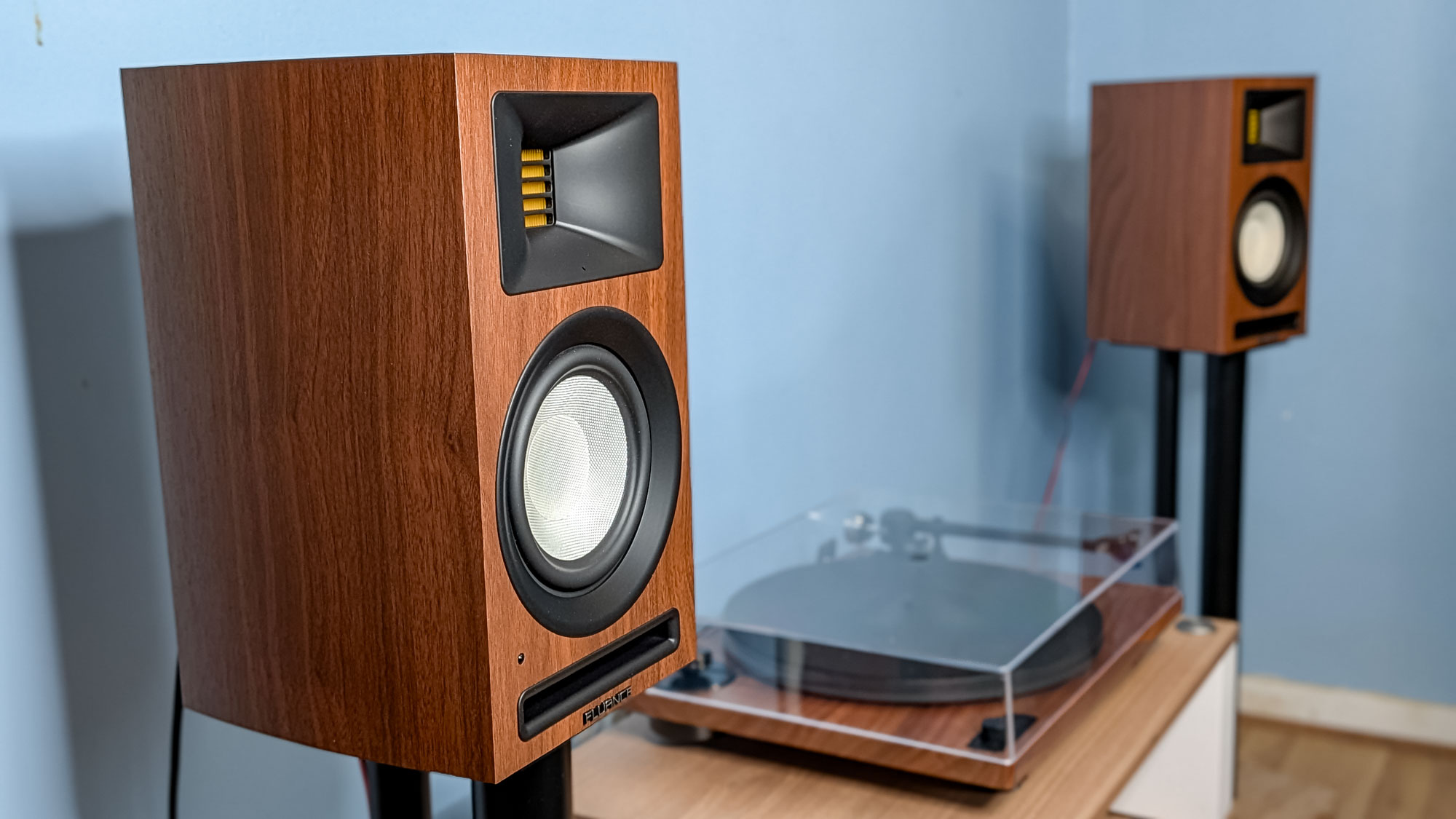
First up, if your primary use case is music, go for a pair of speakers with an HDMI port like the Fluance Ri71 above. They sound much better than sound bars for music, bar none. You'll thank me later.
Now, for the other questions. TV users will want something that increases dialog clarity and makes it easier to hear what's going on in the news. You won't need a subwoofer or any kind of surround support. The Sony HT-S100F above is going to be perfect for you, given it's not too expensive and works great for TV.
Movie watchers should look out for subwoofers and surround speakers. You want more space for your Dolby Atmos mixes and the subwoofer will help with the low-end rumble you get with movies. The Sonos Arc Ultra and subwoofer is a good option for you, or the JBL Bar 1300X if you want something in one package.
Size matters
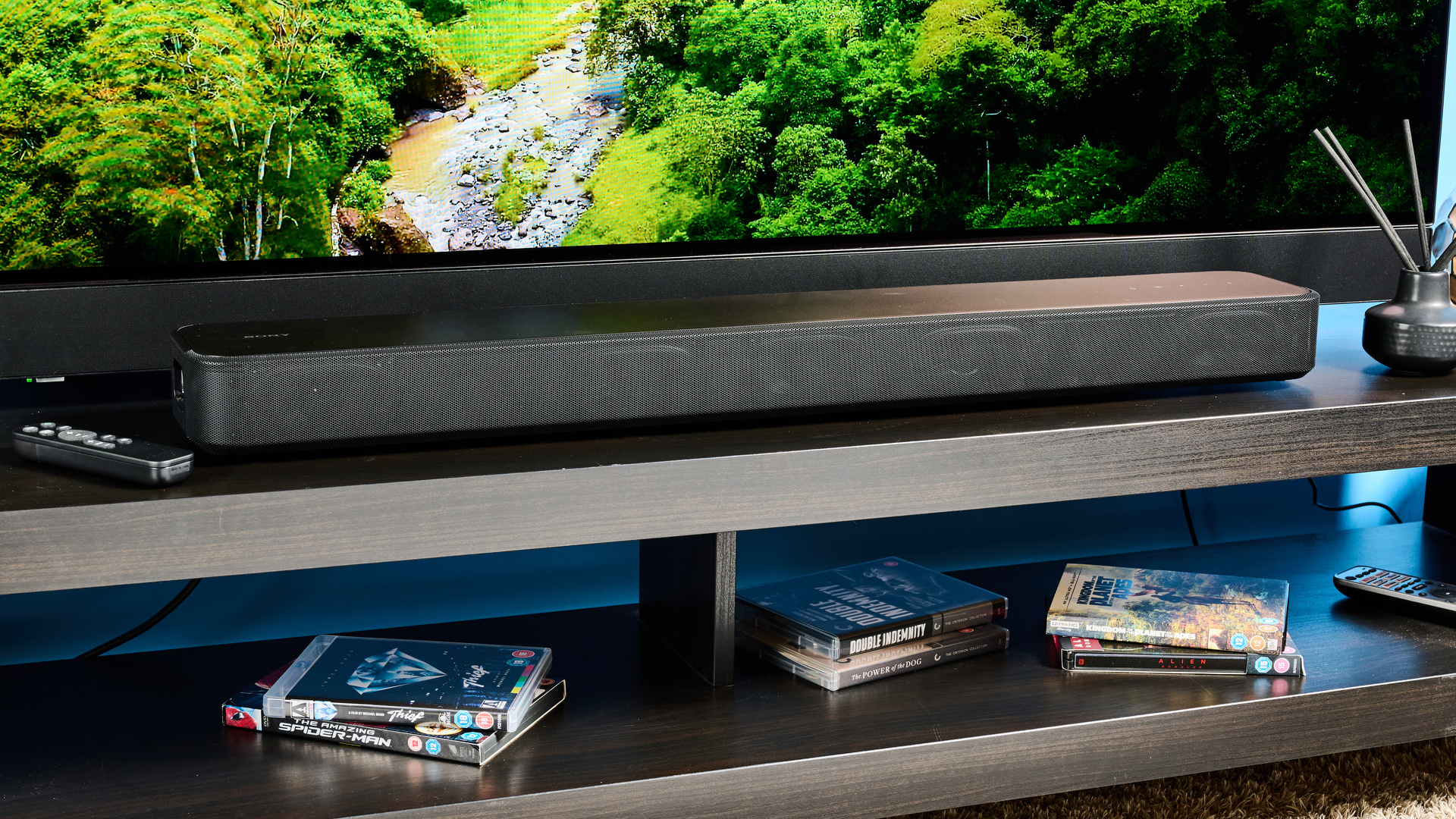
If you've a small room or a small TV, you don't want a massive soundbar; that much should be obvious. It wouldn't fit, for one, but it would also make your TV look much smaller. And who wants that.
However, you also don't want a soundbar that's too small for your TV. Otherwise, all of the sound will appear to come from the middle of the TV, rather than from it's sides like it should. You'll want to get a decently sized soundbar if you've got something between 50-75 inches big. Larger than that and you should probably consider either the biggest soundbar you can lay your hands on, or a proper stereo setup built around one of the best home cinema receivers.
Sign up to get the BEST of Tom's Guide direct to your inbox.
Get instant access to breaking news, the hottest reviews, great deals and helpful tips.

Tammy and her generous collection of headphones have found a new home — Tom's Guide! After a two-and-a-half-year stint as iMore's resident audiophile, Tammy's reviews and buying guide expertise have more focus than ever on Tom's Guide, helping buyers find the audio gear that works best for them. Tammy has worked with some of the most desirable audio brands on the planet in her time writing about headphones, speakers, and more, bringing a consumer focussed approach to critique and buying advice. Away from her desk, you'll probably find her in the countryside writing (extremely bad) poetry, or putting her screenwriting Masters to good use creating screenplays that'll never see the light of day.
